I don’t know why exactly, but roll-top desks fascinate me and appeal to me immensely.
Perhaps it’s the generous amount of storage space afforded me by all those little (or sometimes larger) drawers and pigeonholes.
Or the admiration I’ve always felt for their builders, who have to ensure that their roll-top mechanisms always glide smoothly up and down, without sticking, without misaligning, and without requiring that their owners get into wrestling matches with them.
But in the end I think it’s simply because my deskwork tends to look and feel a lot more important than it really is, if it’s done on a roll-top desk.
Technically, a roll-top desk is any desk with some sort of cover that “rolls” over the desktop surface, to conceal and secure any papers and other items left on it, since it can be quite tedious to put away everything at the end of each work day, only to bring them out again the following morning.
Let's first look at some original examples as shown in archival photos. On page 242 of Turn of the Century by Gilda Cordero-Fernando (GCF Books: Manila, 1978) is a typical large roll-top desk.
Next, a smaller roll-top desk is shown on page 34 of Household Antiques & Heirlooms by Felice Sta. Maria (GCF Books: Manila, 1983), standing tall and proud with a squad of drawers and pigeon holes.
There are also various desks that are “almost” roll-tops, but not quite. On the same page of HA&H is what I call a “drawbridge” desk, with the drop-front cover in “open” mode.
On page 226 of Filipino Style (Editions Didier Millet: Singapore, 1997) is a wider “escritorio” or writing desk, with the same kind of drop-front.
Here are two drawbridge-type desks, from a private collection.
Here is an intimidating-looking writing desk,
with not only a large drawbridge,
but also with secret compartments hidden behind the columns that appear to merely ornament the small drawers.
Much more modest examples of covered desks that don’t qualify as roll-tops are these so-called scribe’s desks, among other things that they could be called. The slanted desktop is hinged at the far end to enable it to open and allow access to the space beneath, where papers and writing equipment can be stowed.
But no matter how nice-looking and even functional these examples might be, they’re simply not roll-tops. To qualify, a desk must have that all-essential, er, roll-top. The roll-top itself is a sliding cover, usually made up of narrow strips of wood slats, glued to, and held together by, a canvas sheet. In this way, the cover is able to glide through whatever, often roller-coaster-like, grooved curves are fancied by the builder.
Here is an example of a small desk, shown with the roll-top in the “closed” position.
And here is the same desk with the roll-top in “open” position, clearly showing the gracefully curved groove that it had to navigate, the simple pigeon holes on the “back wall,” and the canvas sheet behind the pigeon holes holding the retracted roll-top slats in place.
This roll-top desk, now in use by the administrative assistant in my brother’s eye clinic, is not inhibited by its small size in drawer capacity. Not only does it have a respectable center drawer, but it also has three central-locking drawers on the right side.
Sometimes, a small roll-top desk will compensate for its limited storage capacity by providing an extra shelf above and outside, as in this next one that I spotted at the same antique dealer who sold us the previous example, and which is now in the family collection in our ancestral house in San Rafael, Bulacan.
Some roll-top desks are even smaller than these last two. If I were to use this next example, I don’t think I could accomplish much, with my style of working.
Most roll-top desks though are larger than these ones. Here is one that I spotted at an antique dealership.
Not only does its greater width allow for columns of drawers on both left and right, but also some of its pigeon holes have drawers as well.
Unfortunately, its roll-top only curves through a simple arc, rather than an S-shaped one or something even more complex. Minus points for that.
The same antique dealership offered this antique roll-top desk some months later. Like the previous one, it too was large-sized, and had only a simple-curving roll-top.
But it gets plus points for having a cabinet door, rather than the usual drawers, on the right side – useful for storing larger pieces of equipment of yesteryear such as typewriters and cash registers. Probably too big now for a laptop and a calculator.
This antique dealer sold quite a number of large roll-top desks and could easily offer them in quick succession, because not only did he actively scour old houses and estate sales for them, but he was also quite skillful at converting ordinary desks into roll-tops – simply by adding the required roll-top mechanism and the pigeon holes.
It’s not obvious if this next example from his workshop is a restored original, or a new conversion.
It’s actually the latter, with the employment of those antique-style drawer pulls (of which this dealer has plenty in stock) to make the whole thing quite convincing.
This dealer supplied a couple of roll-tops to a regular client. One was very similar to the previous one we just saw, but without the small drawers and drawer pulls.
The other was a smaller but equally elegant example, with large drawers below and small drawers above.
So were these restored original antiques, or recent conversions? I don’t know, and I don’t believe it really matters – they’re all quite admirable entries in my view.
Some years back, we decided to commission a conversion from this dealer. But it wasn’t just any conversion. This dealer also had in stock an unusual partners’ table – really one long wide desk with separate work spaces for two people, side-by-side. He temptingly offered to convert it into a double-roll-top-desk for my brother and sister-in-law.
This photo shows the new roll-top structure erected on the left side of the partners’ desk, and the right side still without it, as it originally was when created early in the 20th century.
Then the roll-top structure for the right side was also installed and tested.
Then both were tested
and readied for transport to its ultimate destination in my brother’s and sister-in-law’s home office
where it has been in heavy and constant use for over five years now.
The estate of a famous broadcast and print journalist boasted two large roll-top desks. One had a simple-arc curving top.
But the other one was truly outstanding. Not only did it have an S-shaped pathway for the roll-top, but it also boasted an overall height of 52 inches (132 cm) – probably the tallest that I have seen among antique original (non-conversion) roll-top desks.
When the late owner’s estate was liquidated, both these pieces (and many more besides) were acquired by a prolific antique-dealing and –collecting family, who already had plenty of roll-tops in their collection, including these two similar ones.
Ultimately, we decided to acquire not any of these, but another one in their collection, still unrestored when I first saw it in their workshop about seven years ago. Fully restored, it was amongst the most outstanding roll-top desks that I had ever seen, with a curvaceous roll-top path, drawers of all sizes above and below, and even cabinet doors not just in front on the right,
but on both left and right sides towards the rear.
This now too gets heavy use by my two aunts in their home library.
An antique dealer’s bodega somewhere in Metro Manila had not one but two roll-top desks at the same time. One was a medium-sized one, with no center drawer, but four drawers on the right, and plenty of small drawers where simple pigeon holes would have been.
The other was a much larger specimen, with its full complement of drawers above and below and a nice ornamental touch above the center shelf, but which looked rather ungainly overall, in my opinion.
My family and I passed on both of these.
Another Metro Manila collector-dealer had at least three examples in her collection a few years ago. First was a normal, “low-rise” roll-top.
And last was this gargantuan one, with the “high-rise” profile untempered by the simple arc of the roll-top’s pathway.
All three were also quite exorbitantly-priced, so I walked away with just these photographs in hand.
Another Metro Manila dealer offered several roll-top desks, at different times. One was this respectable example, with brass drawer handles.
It eventually found its way to the home of a Bulacan collector, where it evidently was put to work right away.
Yet another antique dealership, this time outside the city, was the repository of at least two roll-top desks. One was large, but unfortunately its desktop surface was in four planks rather than the more desirable single slab of narra.
In fact, I was told by several dealers that some antique roll-tops and desks offered for sale nowadays were sometimes pre-cannibalized for their single-slab tops, which could then fetch higher prices when used to reproduce altar tables and other such antique-style furniture. In their place are installed narrower pieces of wood, perhaps originally floor planks, hence the numerous roll-top desks without one-piece tops.
This provincial dealer had a smaller roll-top desk, also with a planked top, but with a lot of simple, down-to-earth charm. It helped too that it was very reasonably priced, so my brother snapped it up for his own use in his clinic.
Another suspected conversion is my own roll-top desk at home, with its table surface in three pieces. Fortunately, my mess of stuff conceals this fact rather pathetically.
Some years after acquiring this, I decided to commission another conversion from our by-then regular antique dealer and antique furniture restorer, who had also restored several of our other roll-top desks acquired from other dealers.
Using a large early 20th century executive desk as the base, the conversion involved creating a respectably tall roll-top structure that held not only pigeonholes, drawers and cabinets, but numerous hidden compartments as well.
This formidable piece occupied pride of place in my day-job office for over a year, and even accompanied me on my last expatriate assignment. Since my repatriation, it has regrettably sat in storage, waiting for the opportunity to be used on a daily basis once again.
I’ve come across several antique roll-top desks over the years, some in pretty decent condition, just needing perhaps a little refinishing. Here is a large one, ready for that final coat of oil and wax.
Here is a small one, still with what appears to be its original varnish, and ready for immediate use by a willing buyer.
Another small roll-top desk offered for sale in an antique dealership had obviously served its previous owner faithfully, with signs of normal but lengthy wear proudly exhibited, whether open or closed. This too could be used immediately by the next owner without lengthy restoration or refinishing.
Two small desks – one roll-top, the other not – were also offered for sale in one antique dealer’s cramped home. Both appeared to be ready-to-use as well.
This small and otherwise beautiful medium-sized roll-top desk, on the other hand, was being offered without its roll-top mechanism. The dealer quoted a hefty premium to make a new mechanism to replace the missing one – which was probably not too unreasonable, given the tedium and length of workshop time needed to make one. In the meantime, I guess that that makes this a roll-top-less roll-top desk.
I have also spotted many roll-top desks in very bad condition, desperately awaiting restoration. This small one was even missing some of its wooden drawer handles.
We eventually rescued this, and after restoration sent it to our ancestral house in San Rafael, joining the other small one that we previously saw.
I found this large roll-top desk in a prolific antique furniture warehouse in the city.
Despite its forlorn state, and because it was reasonably priced, I snapped it up and had it refurbished by our regular antique furniture restorer, where it made for a much-appreciated birthday gift for our mom a few years ago, and a much-used home office work space since then.
In addition to the venerable large example (with side doors) featured earlier, my two aunts have two other roll-top desks in daily use. One is this unusual small example, where the detachable desktop rests on two independent pedestal cabinets of drawers, and the roll-top itself consists of very narrow strips of wood, not glued to a canvas sheet, but instead strung together and pierced through by two lengths of nylon string.
I had found this in the bodega of a rather eccentric provincial antique dealer, now deceased. As if to support the view that they’ve cornered all the good stuff, another eccentric and ancient dealer, still alive as of this writing, was the source of my aunts’ third roll-top desk, amongst the most unique that I have seen, because it appears to have its original, thankfully appearance-enhancing, bone inlay and brass drawer handles.
When refinished by our regular antique furniture restorer, it proved to be a most valuable addition to the family collection, the only bone-inlaid roll-top desk in this bone-inlay-loving family in bone-inlay-mad Bulacan province.
So, have you decided yet if you’re a roll-top person, and if so, what sort of roll-top you’d prefer?
Originally published on 14 June 2009. All text and photos (except as otherwise indicated) copyright ©2009 by Leo D Cloma. The moral right of Leo D Cloma to be identified as the author of this work has been asserted.
Original comments:
arcastro57 wrote on Aug 3, '09
Hmm, I want that rolltop with a matching antique typewriter...and that "ready for immediate use by a willing buyer" for my shoebox size house.
|
rally65 wrote on Aug 3, '09, edited on Aug 3, '09
arcastro57 said
Hmm, I want that rolltop with a matching antique typewriter...and that "ready for immediate use by a willing buyer" for my shoebox size house.
Both of those were offered by the same dealer (with shops in Megamall, Tiendesitas, and Broadway). While those would have been sold by now, this dealer frequently has roll-tops of one size or other, so do check out their current stock.
|
emelynt wrote on Aug 14, '09
ballpark figure, how much is the price range for these unrestored rolltops?
|
rally65 wrote on Aug 14, '09
emelynt said
ballpark figure, how much is the price range for these unrestored rolltops?
The most that we have paid for an unrestored rolltop was PHP 40,000 for the large one with bone inlay that eventually went to my aunts. But that was exceptional, unique, and in a relatively good condition. And the seller was impossible to haggle with.
On the other hand, my brother got the medium-sized one that he now uses in his clinic for just PHP 3,000! Sorry if that's not much of a ballpark range -- probably far too wide. Prices are really highly variable and dependent on as-is condition, size and other specific features, and just how badly you want the thing. |
kdvi wrote on Jun 29, '10
I have been looking for a proper Secretary's Desk for myself. I go to Jo-Liza's in Megamall and sometimes in San Juan but I see the ones that are imported from Indonesia (teakwood).
Please share naman where can I find all these the items. Thanks! |
rally65 wrote on Jun 29, '10
kdvi said
I have been looking for a proper Secretary's Desk for myself. I go to Jo-Liza's in Megamall and sometimes in San Juan but I see the ones that are imported from Indonesia (teakwood). Please share naman where can I find all these the items. Thanks!
I recommend that you check out Unang Panahon, also in Megamall (same level as Jo-Liza but on the other end). They often have at least one antique rolltop in stock -- actually newly-made rolltops, but with antique desks as the major component. They're actually done quite well.
The alternative is to just look for old desks, then have them converted to rolltops. Both Unang Panahon and the Bloomquist Workshop (in Philtrade Halll 6) are quite good at doing this. |
kdvi wrote on Jun 29, '10
Wow, thanks for the info... something to look forward to this weekend.
|
rally65 wrote on Jul 2, '10
kdvi said
Wow, thanks for the info... something to look forward to this weekend.
Good luck and happy antique hunting!
|
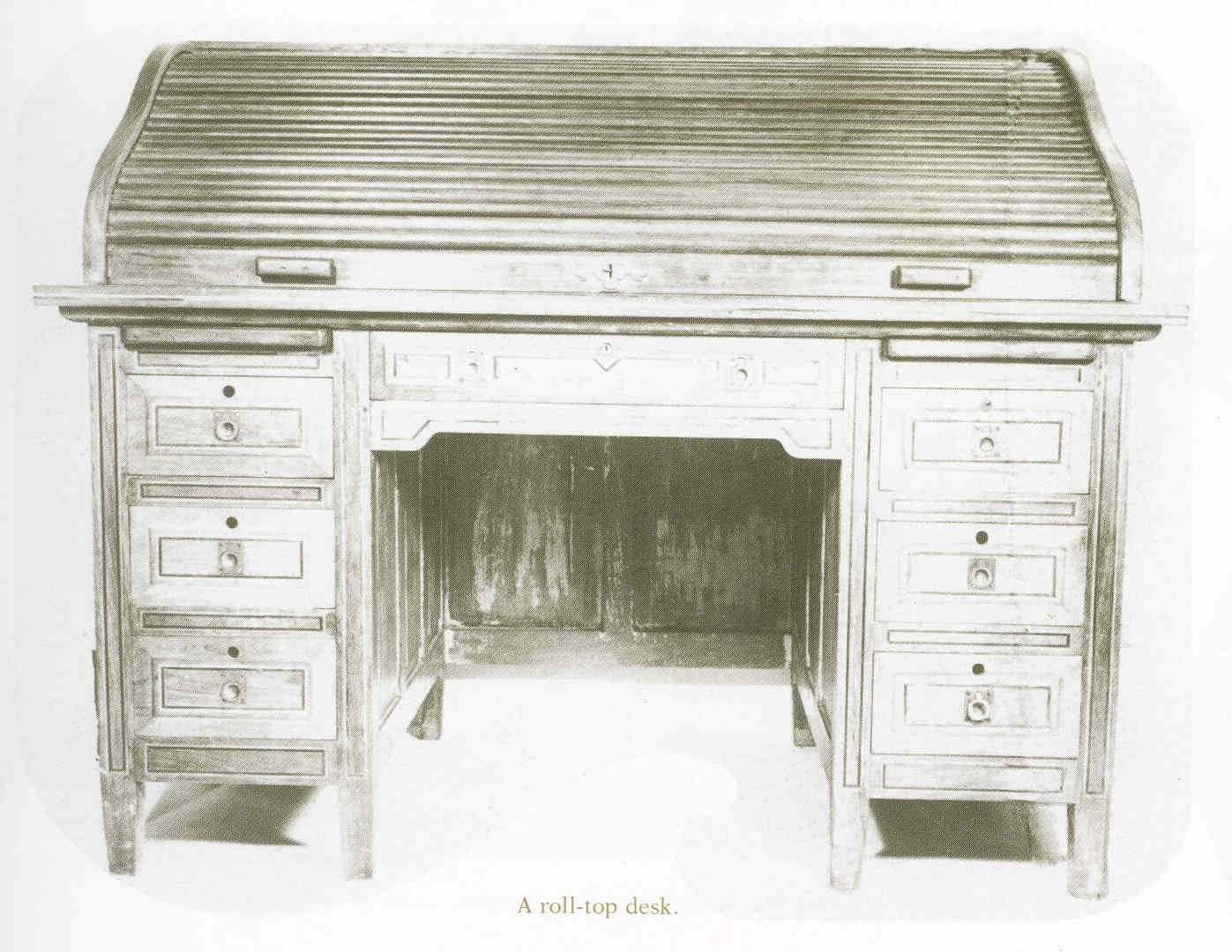
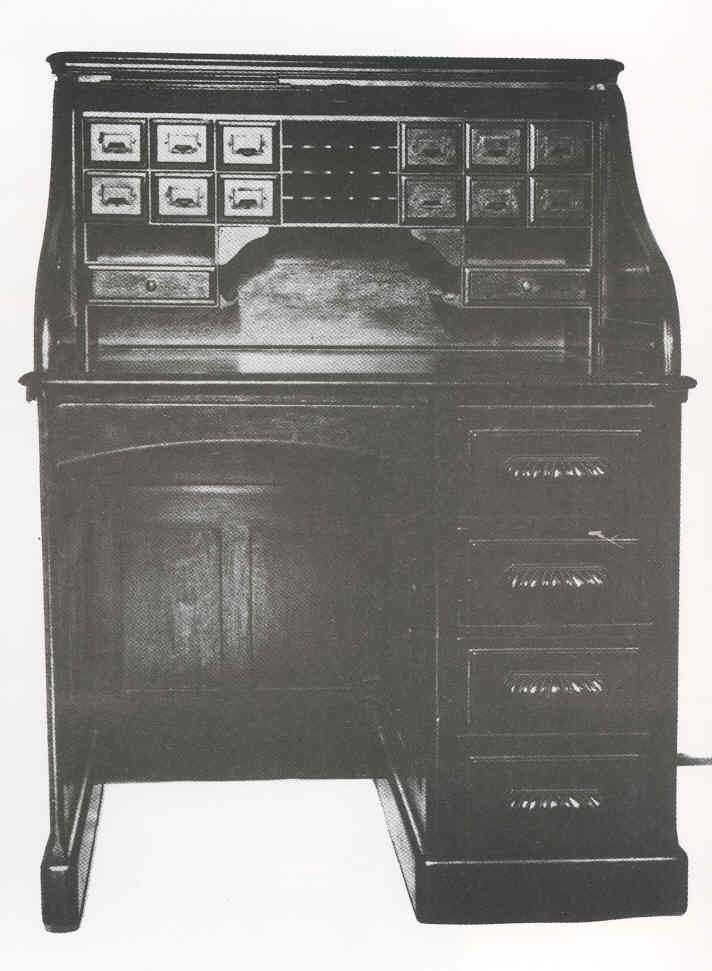

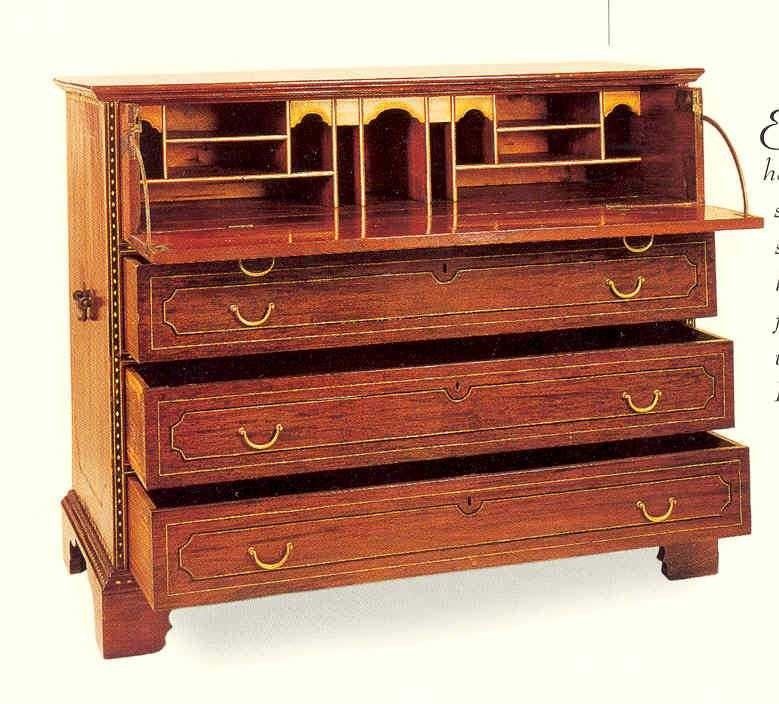
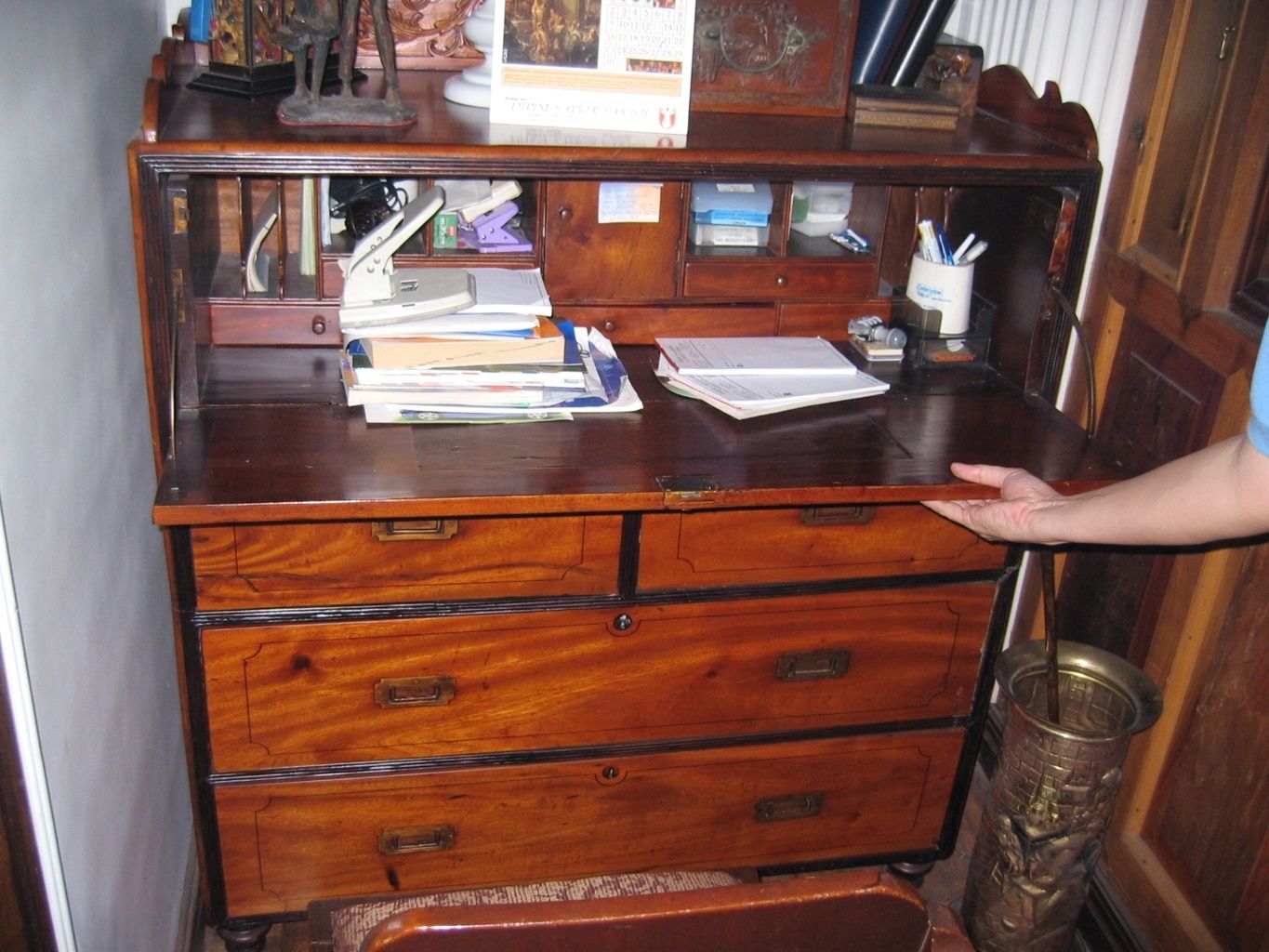
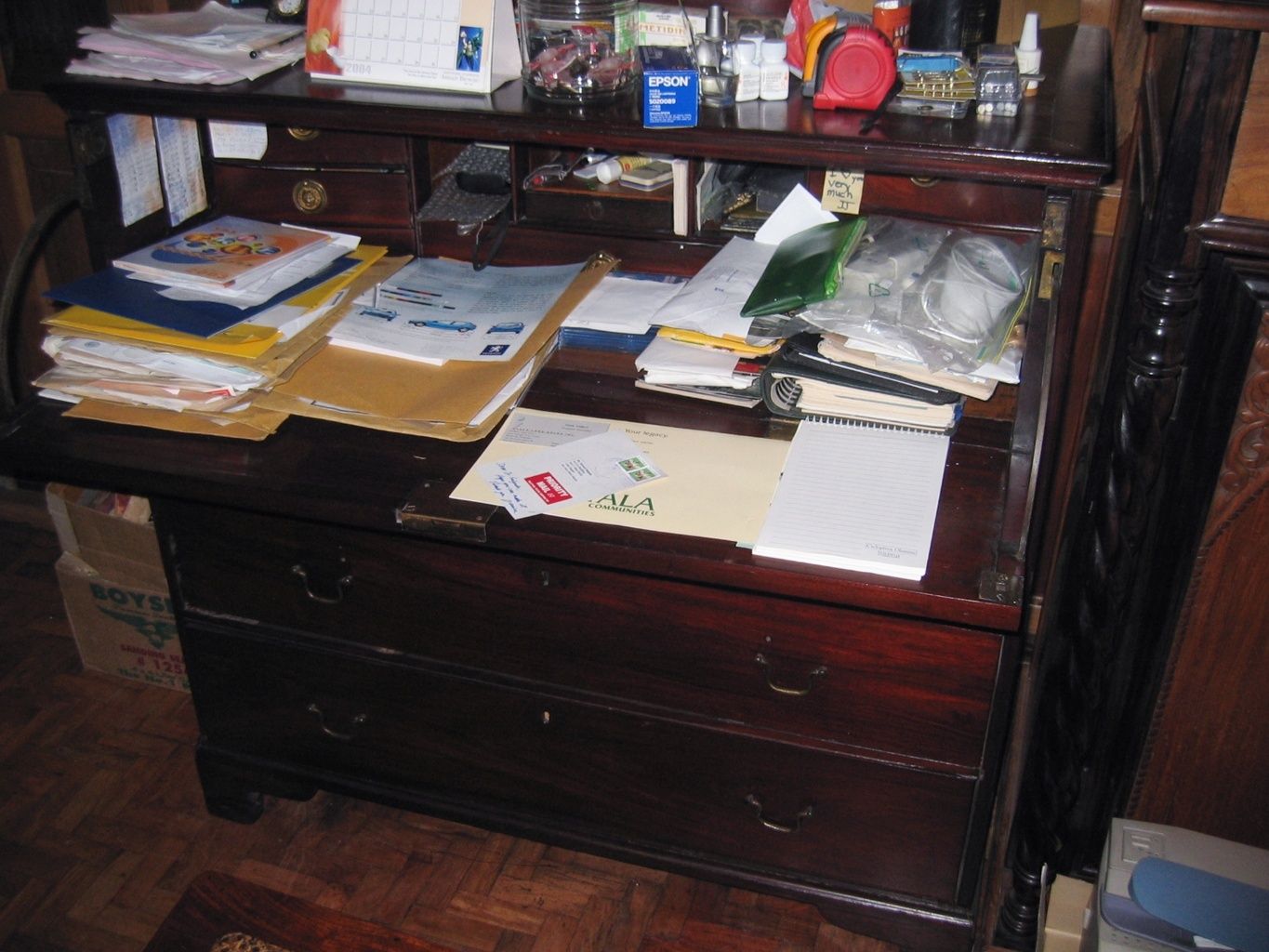



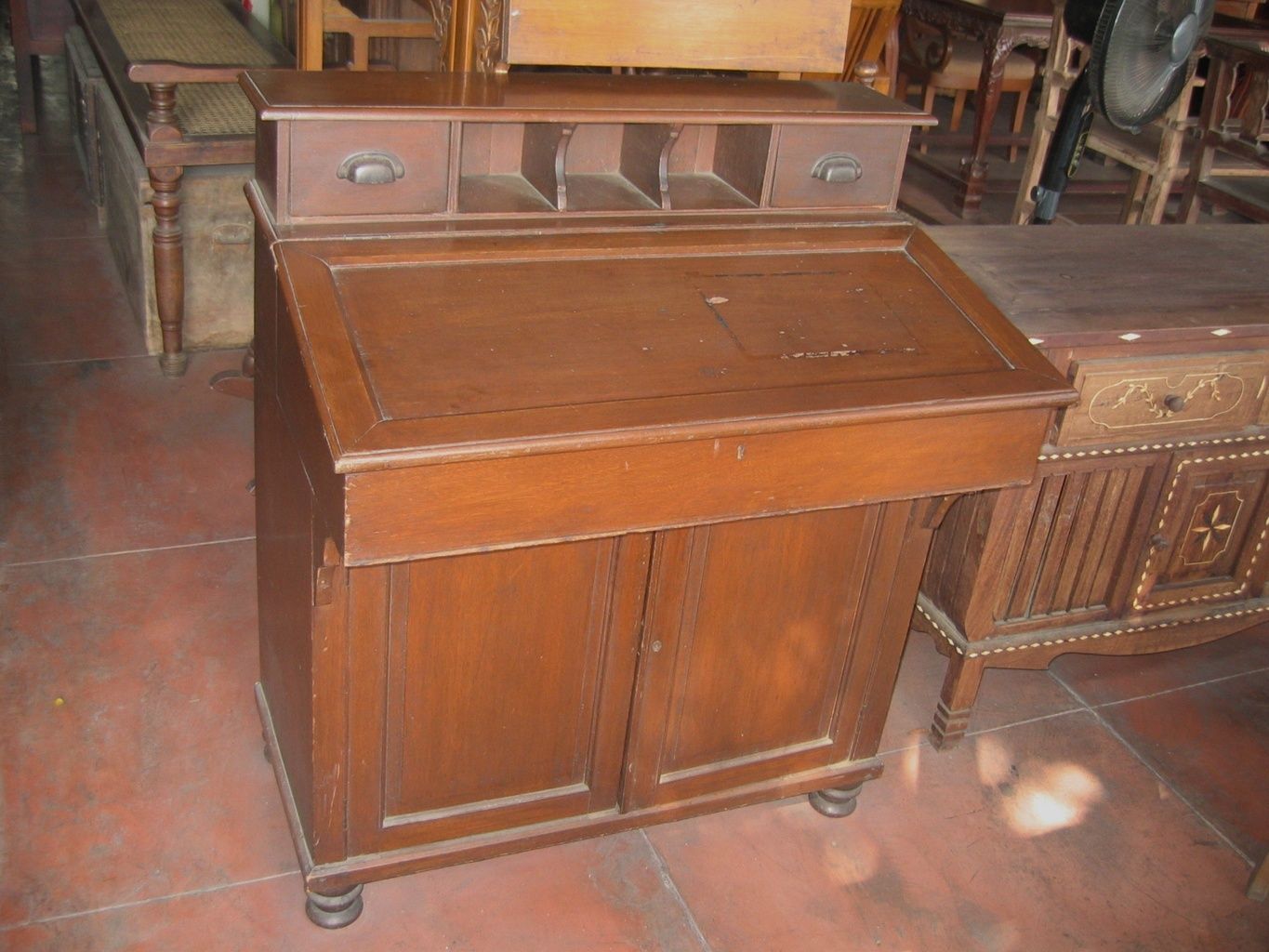


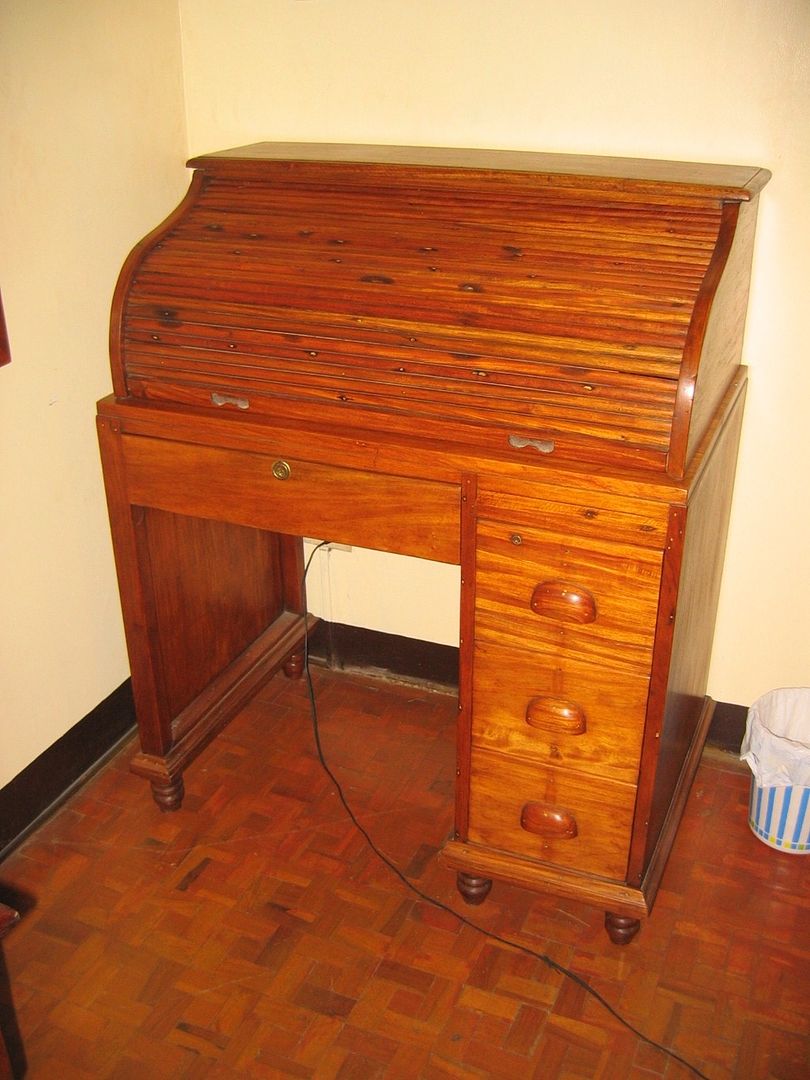
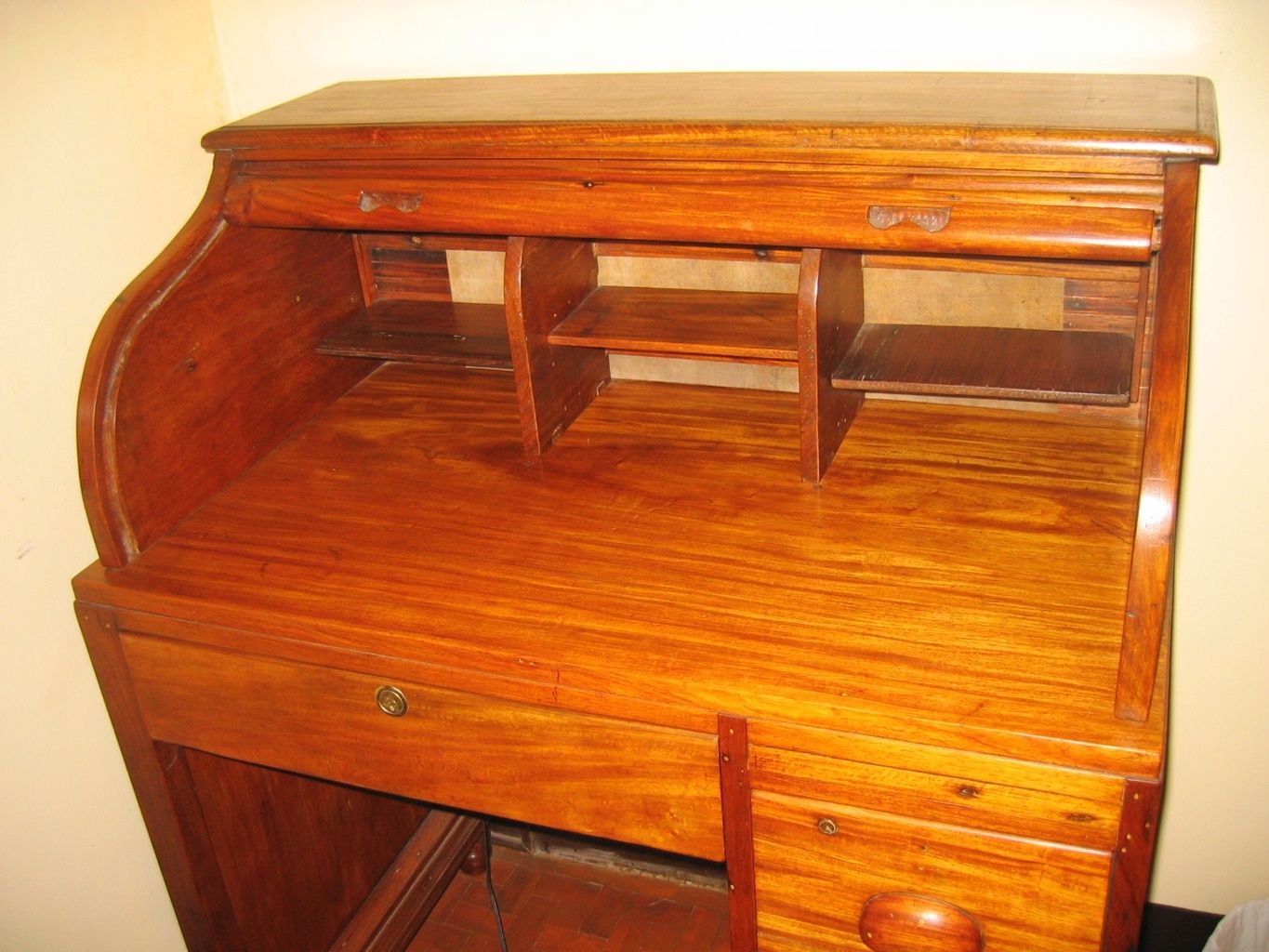
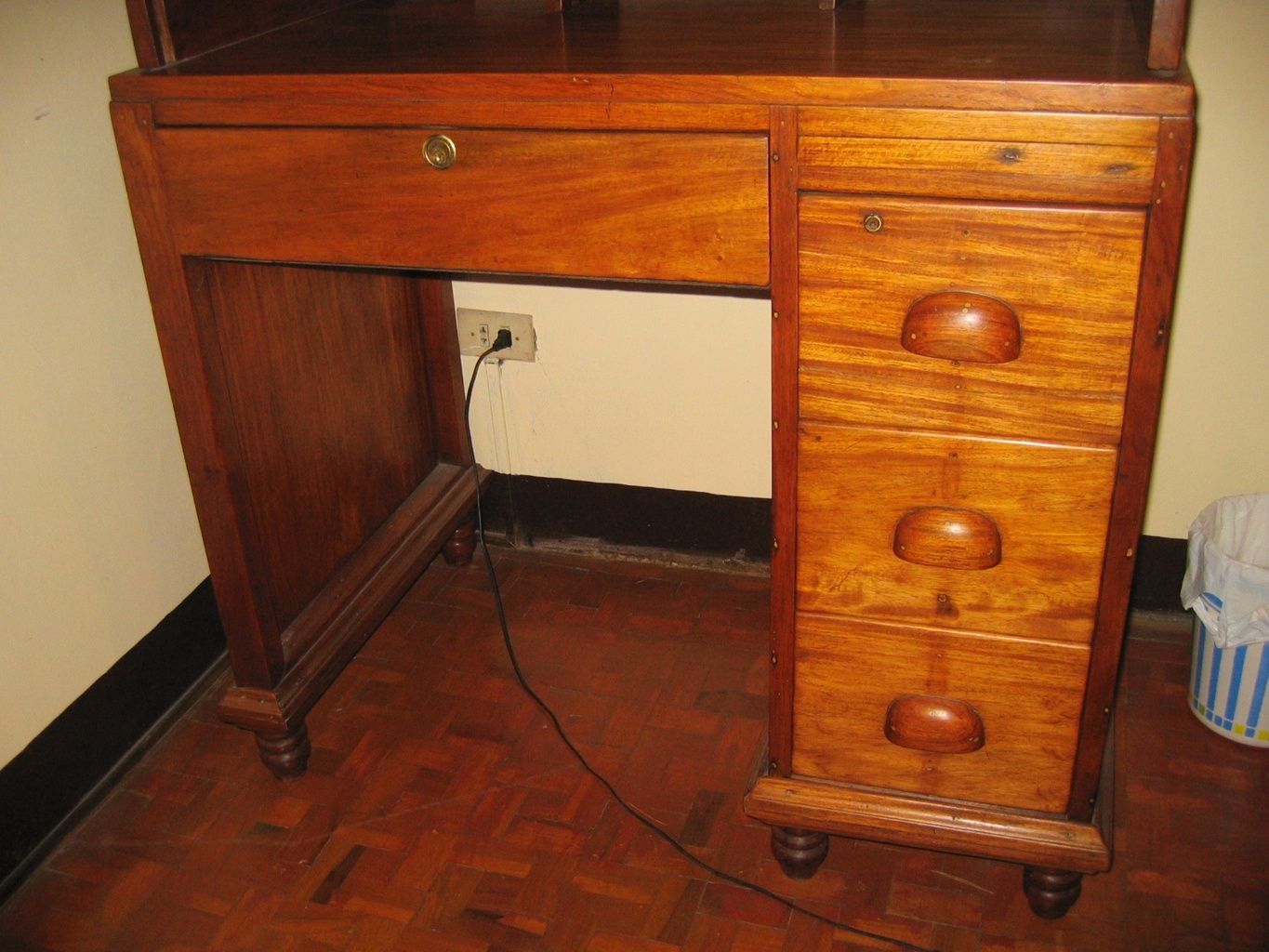

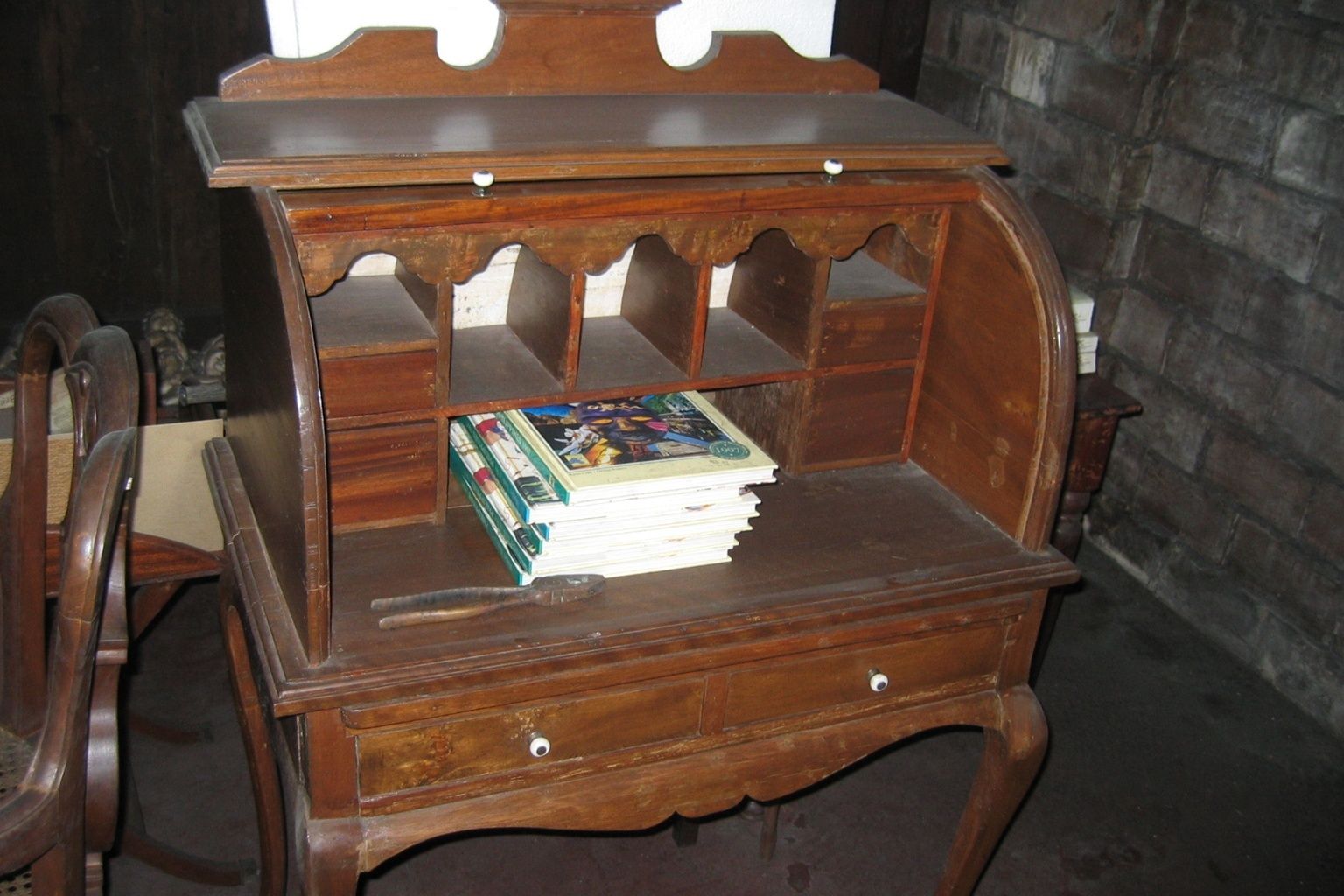
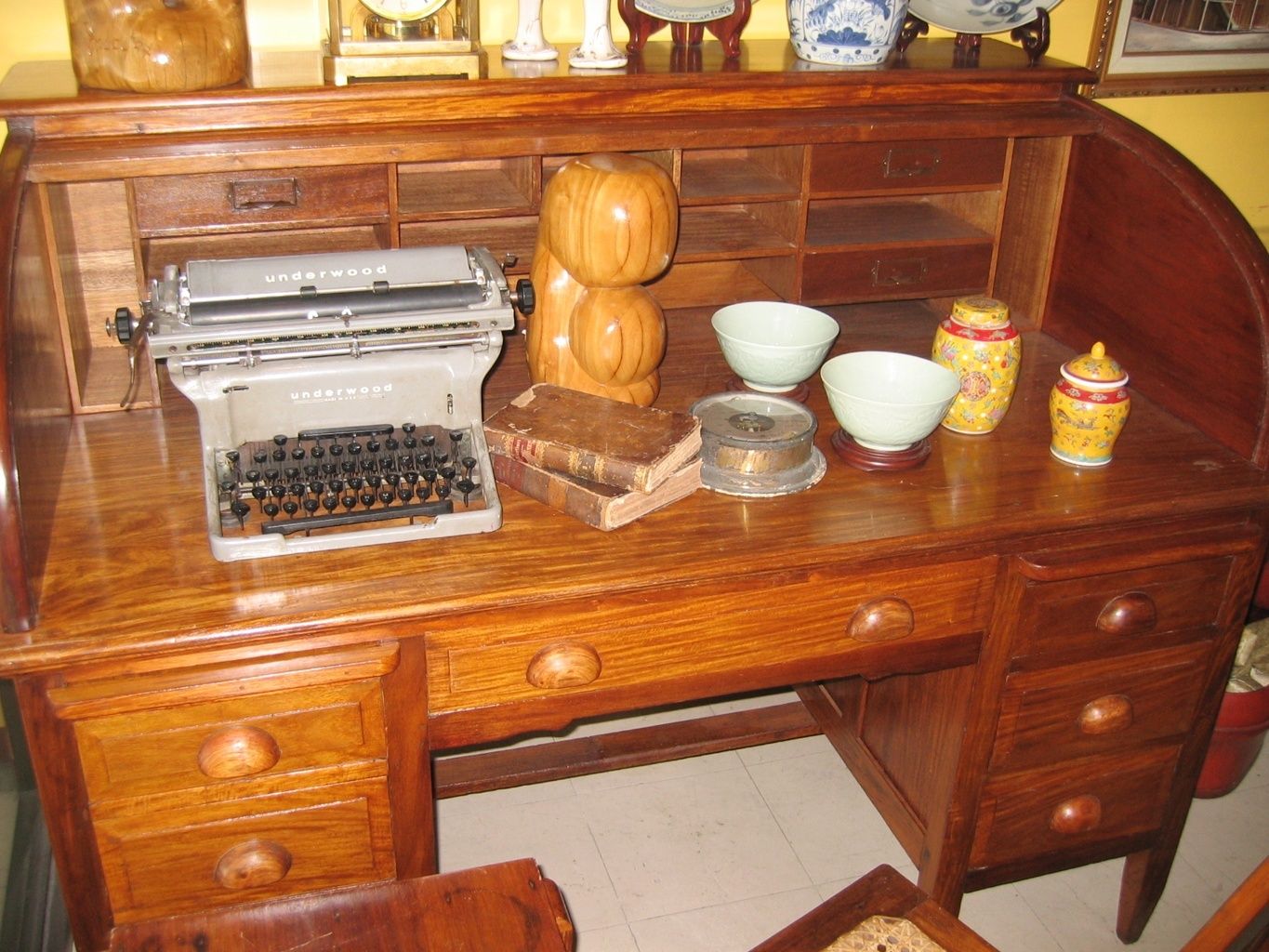
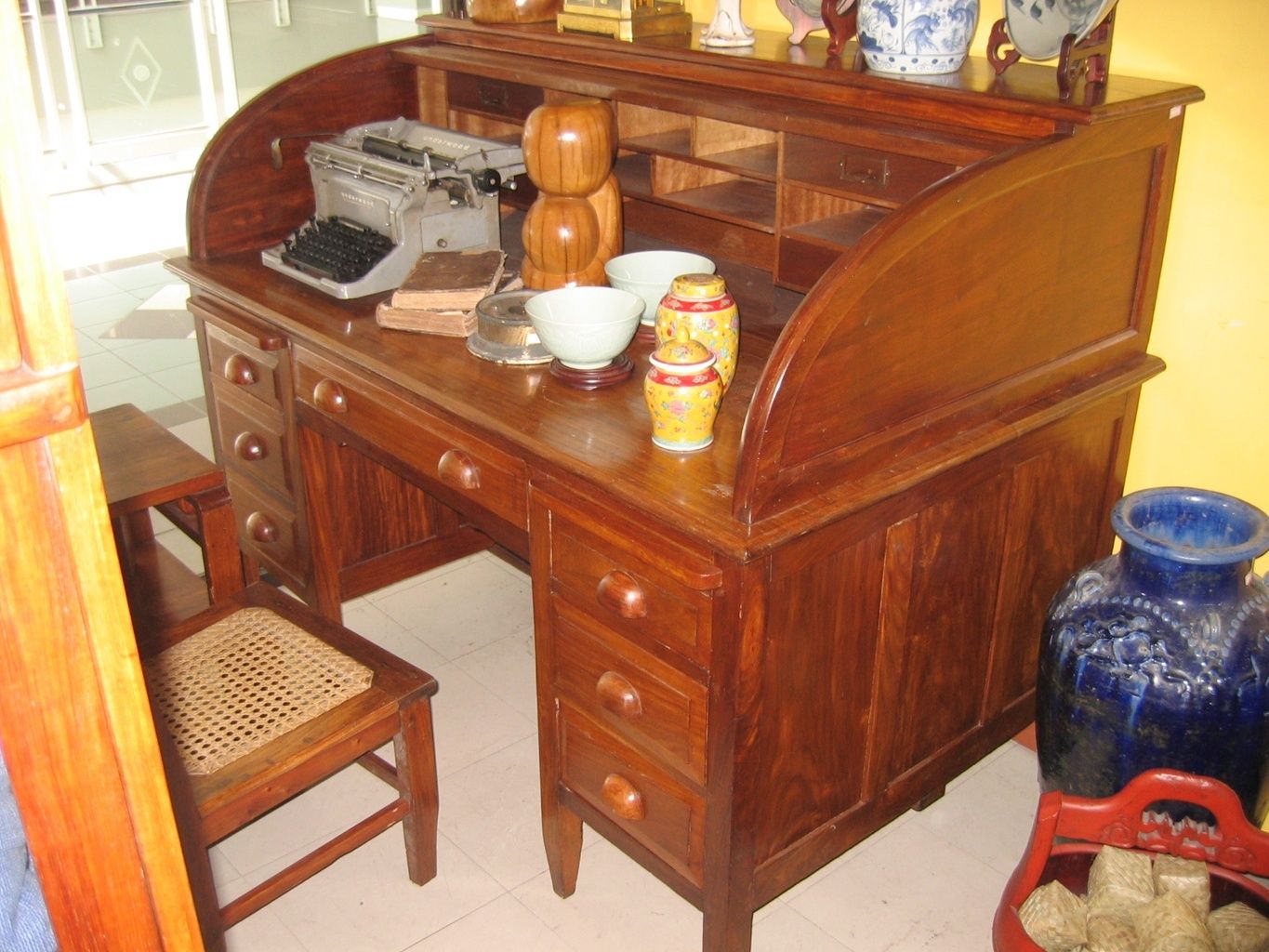
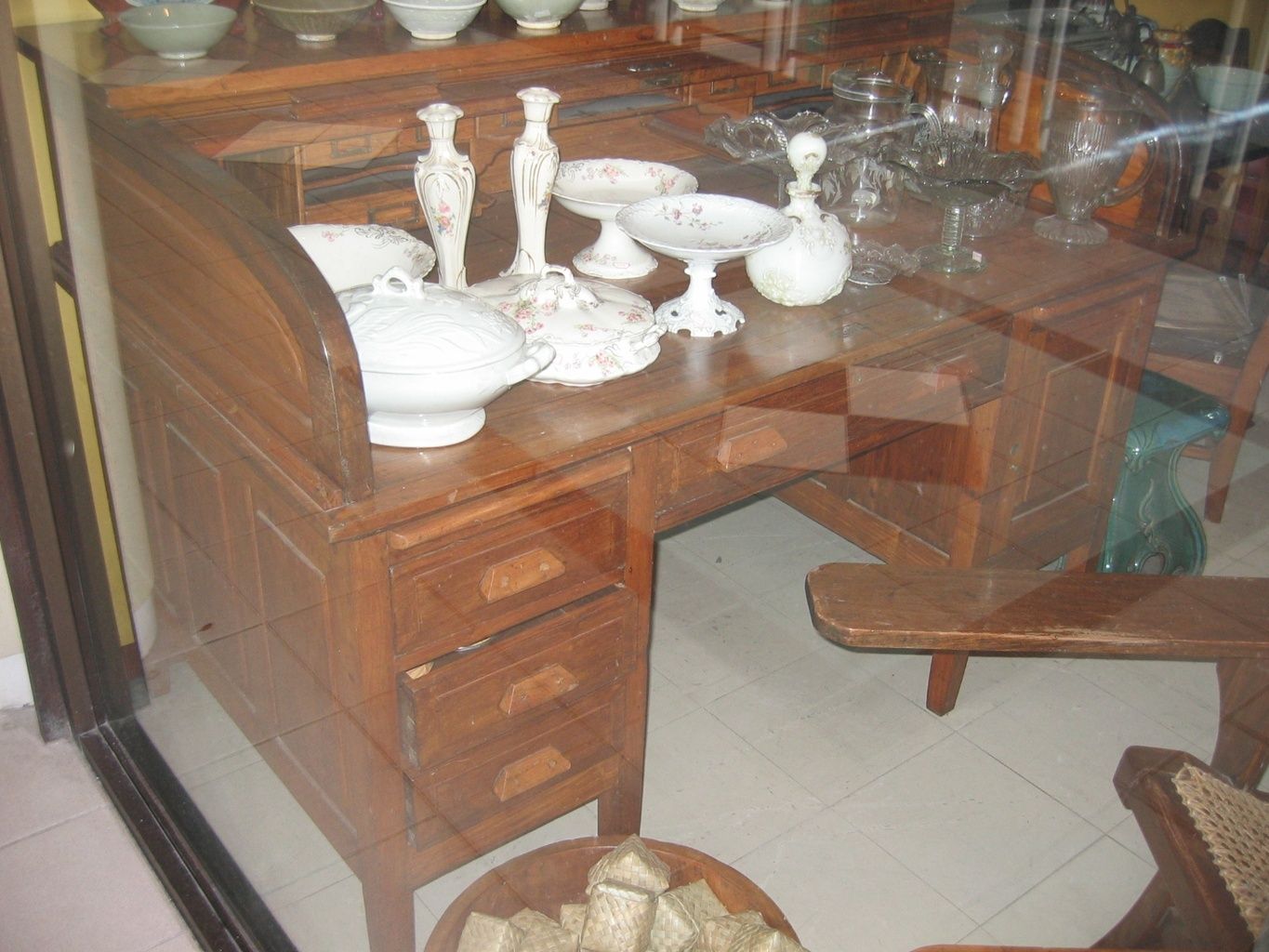
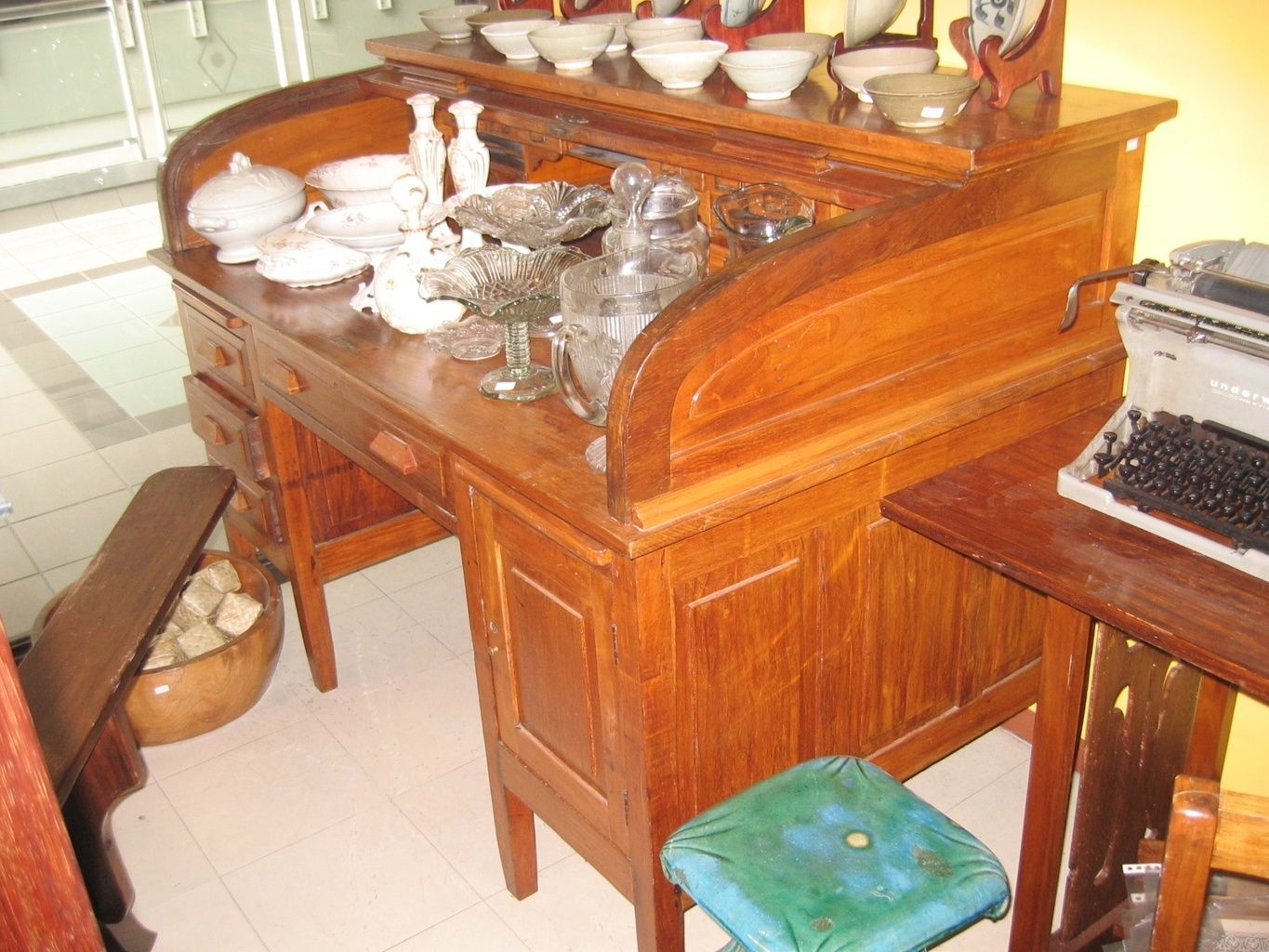


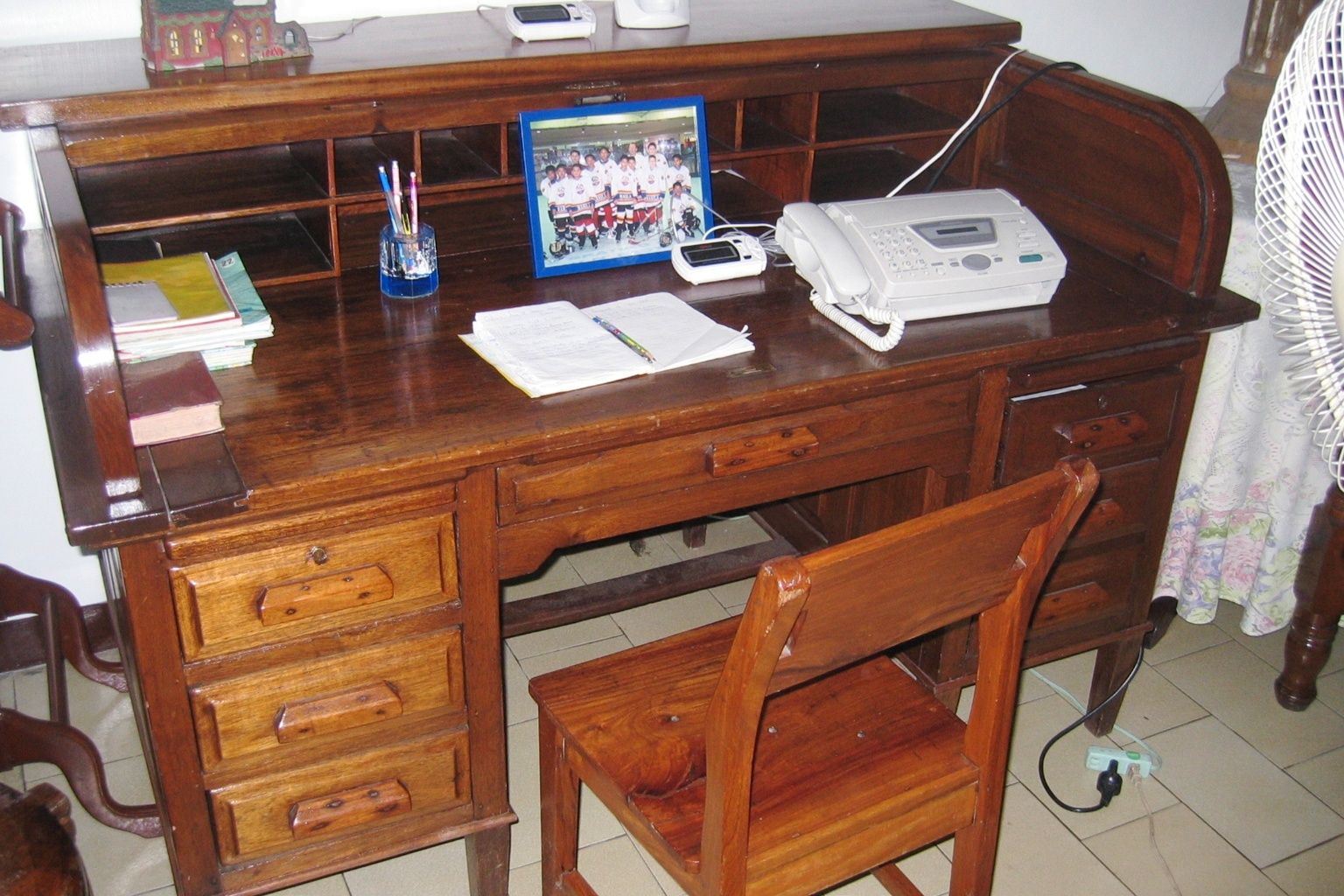
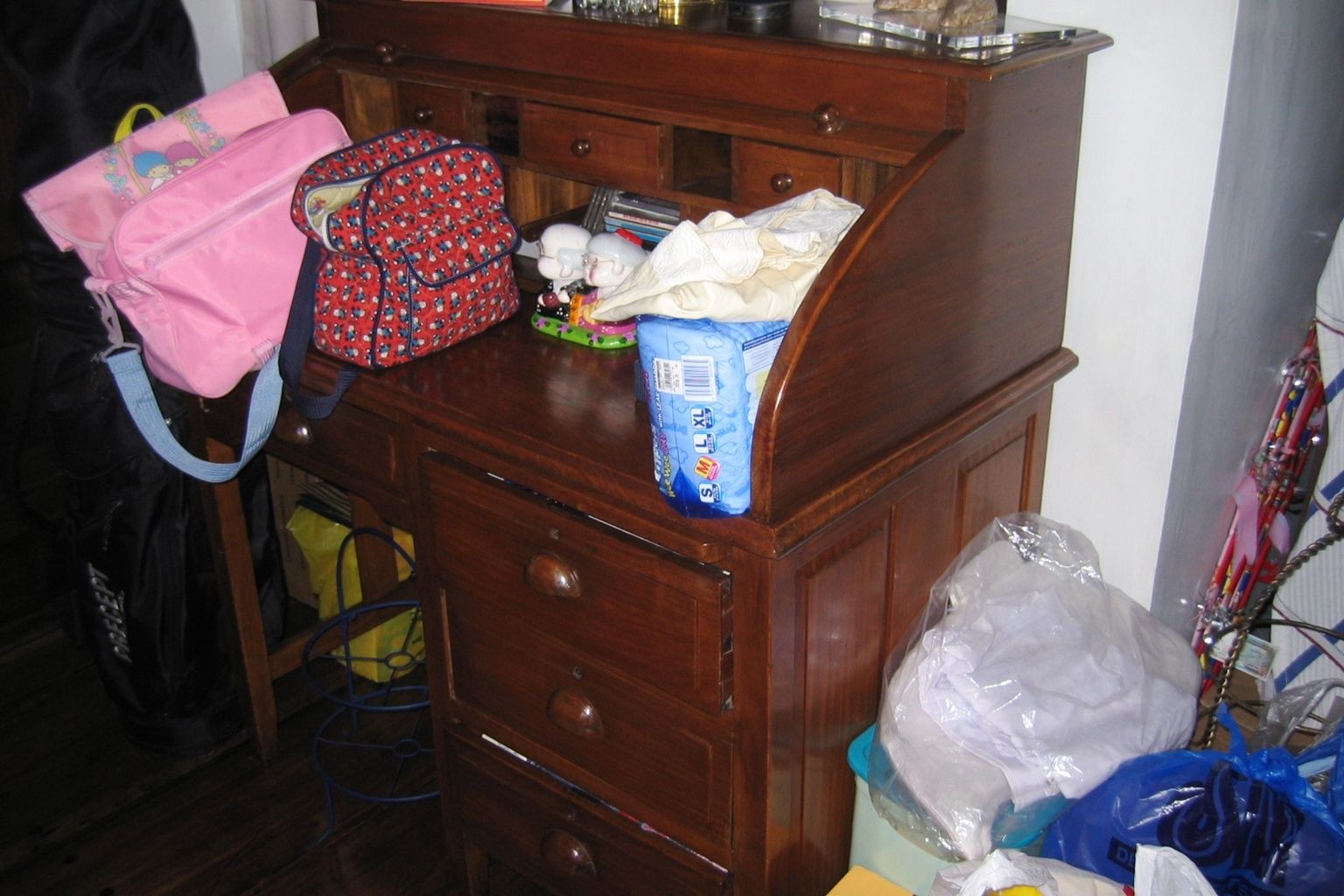
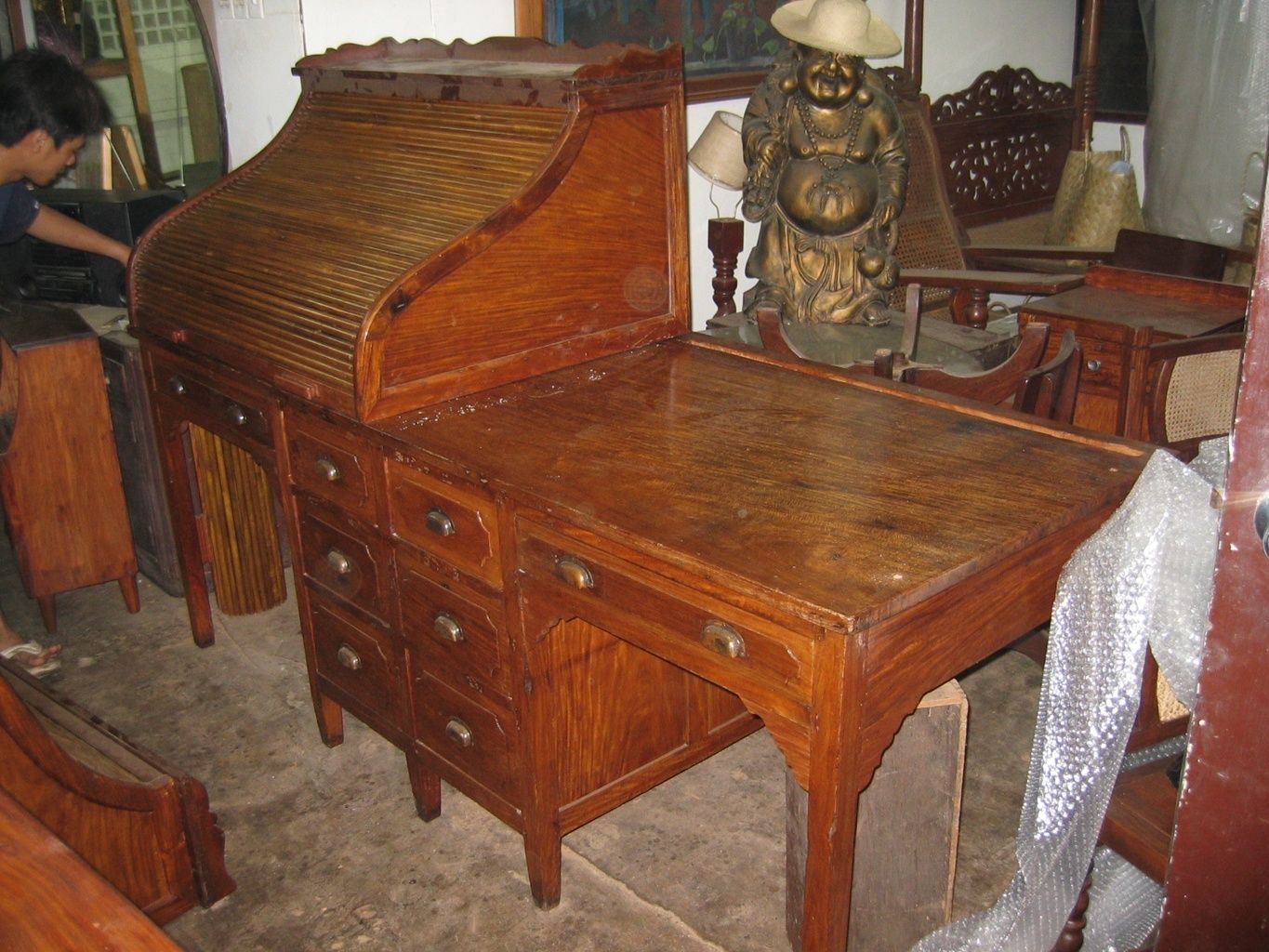

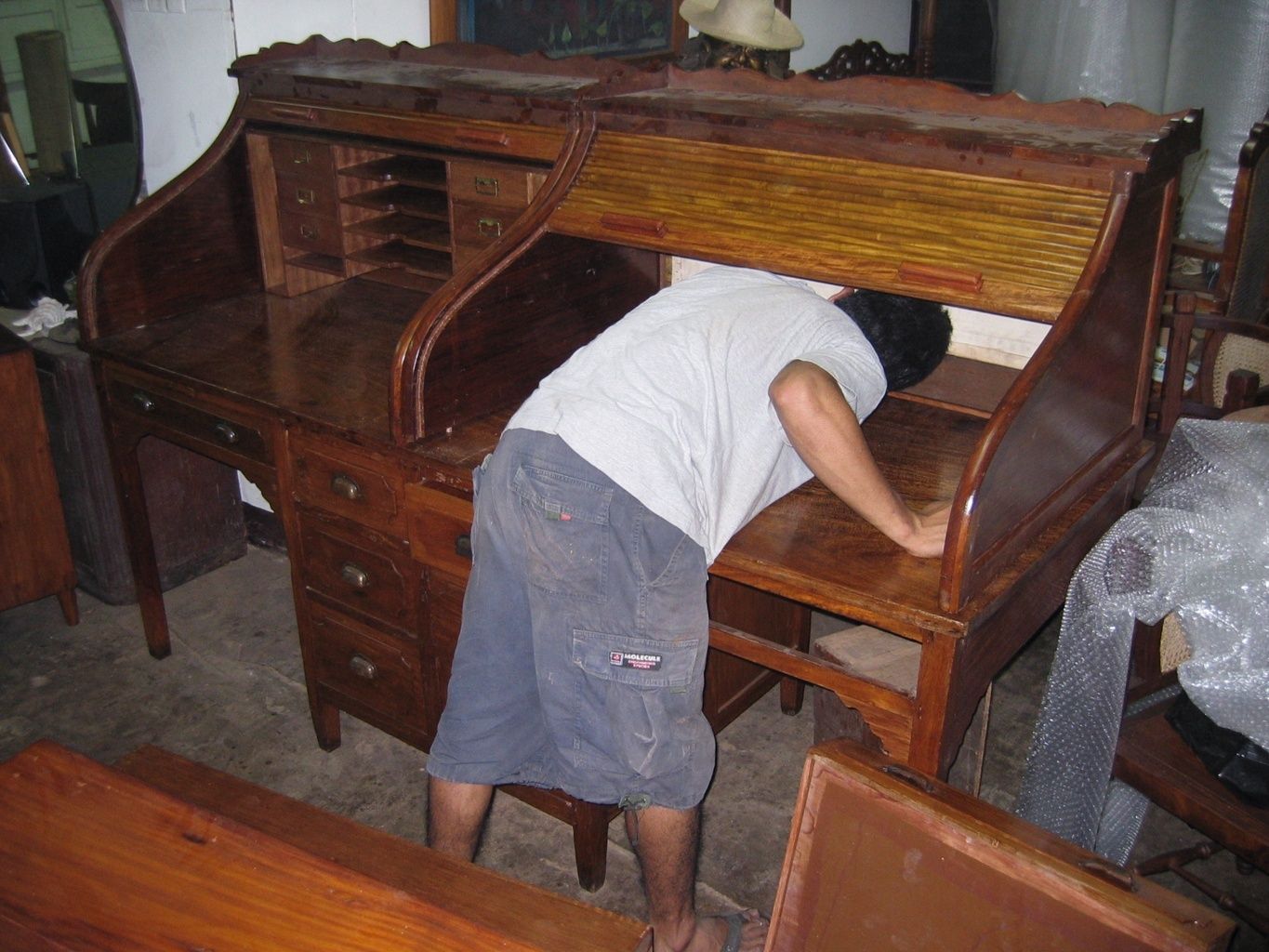
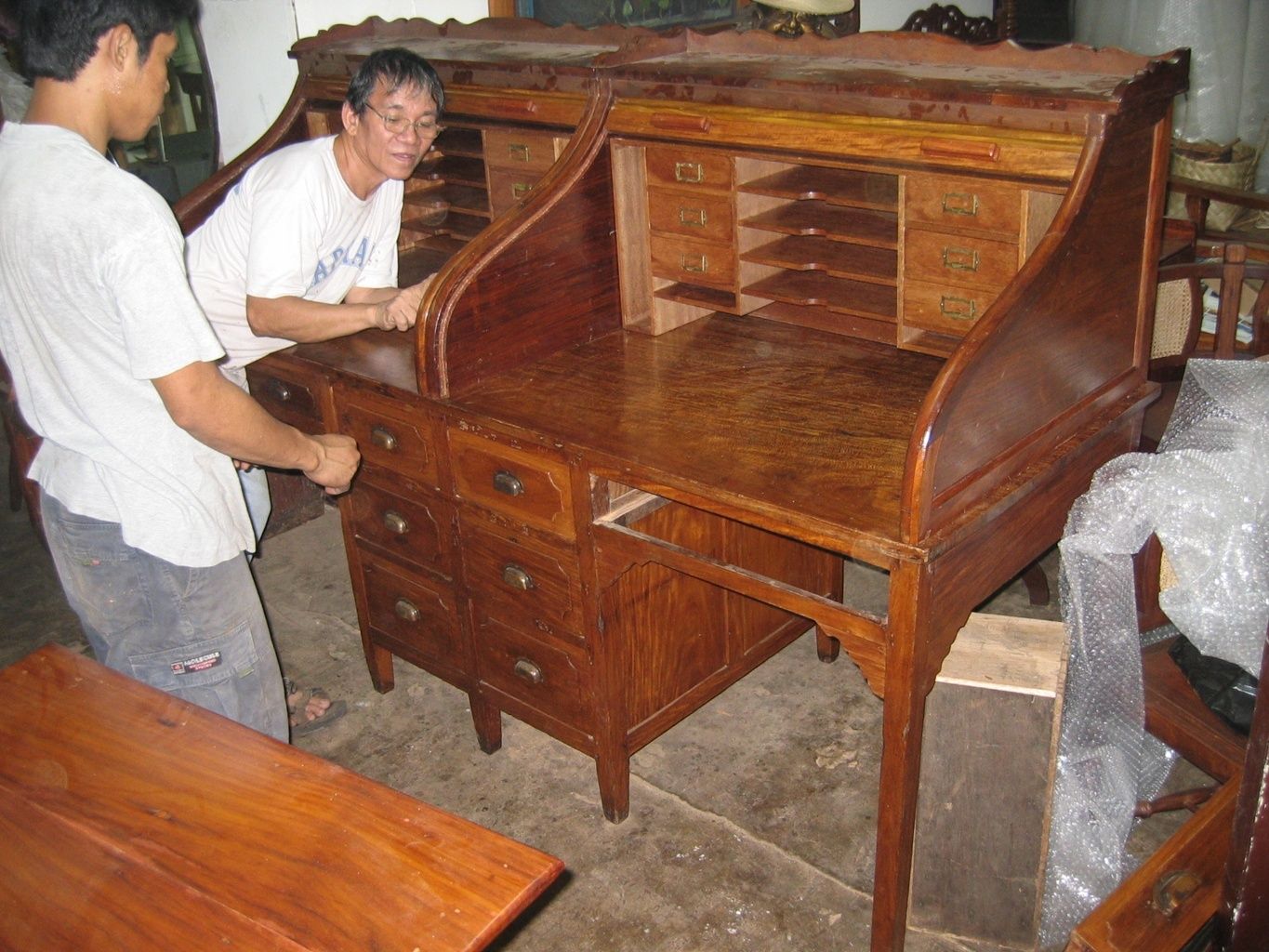
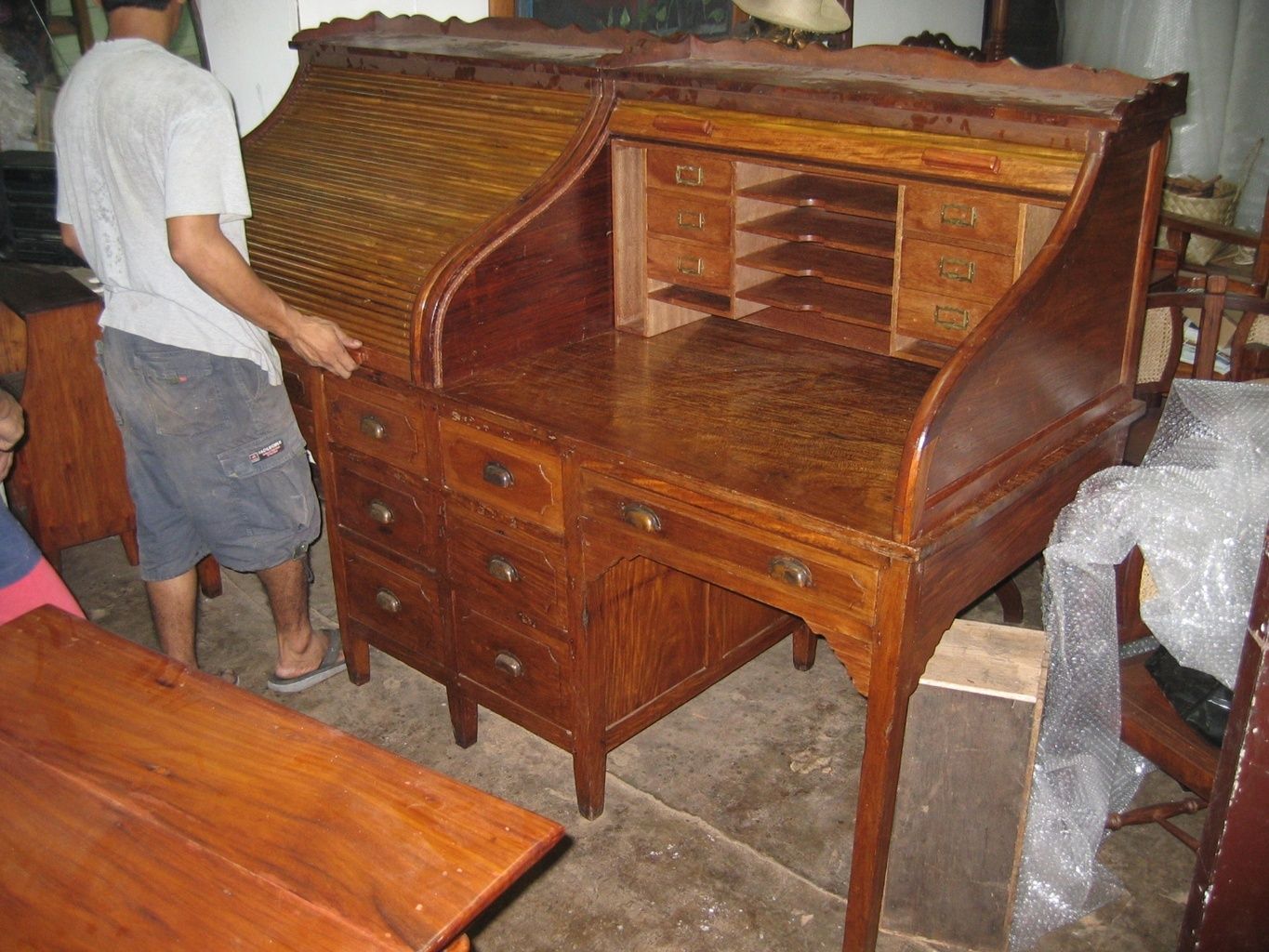
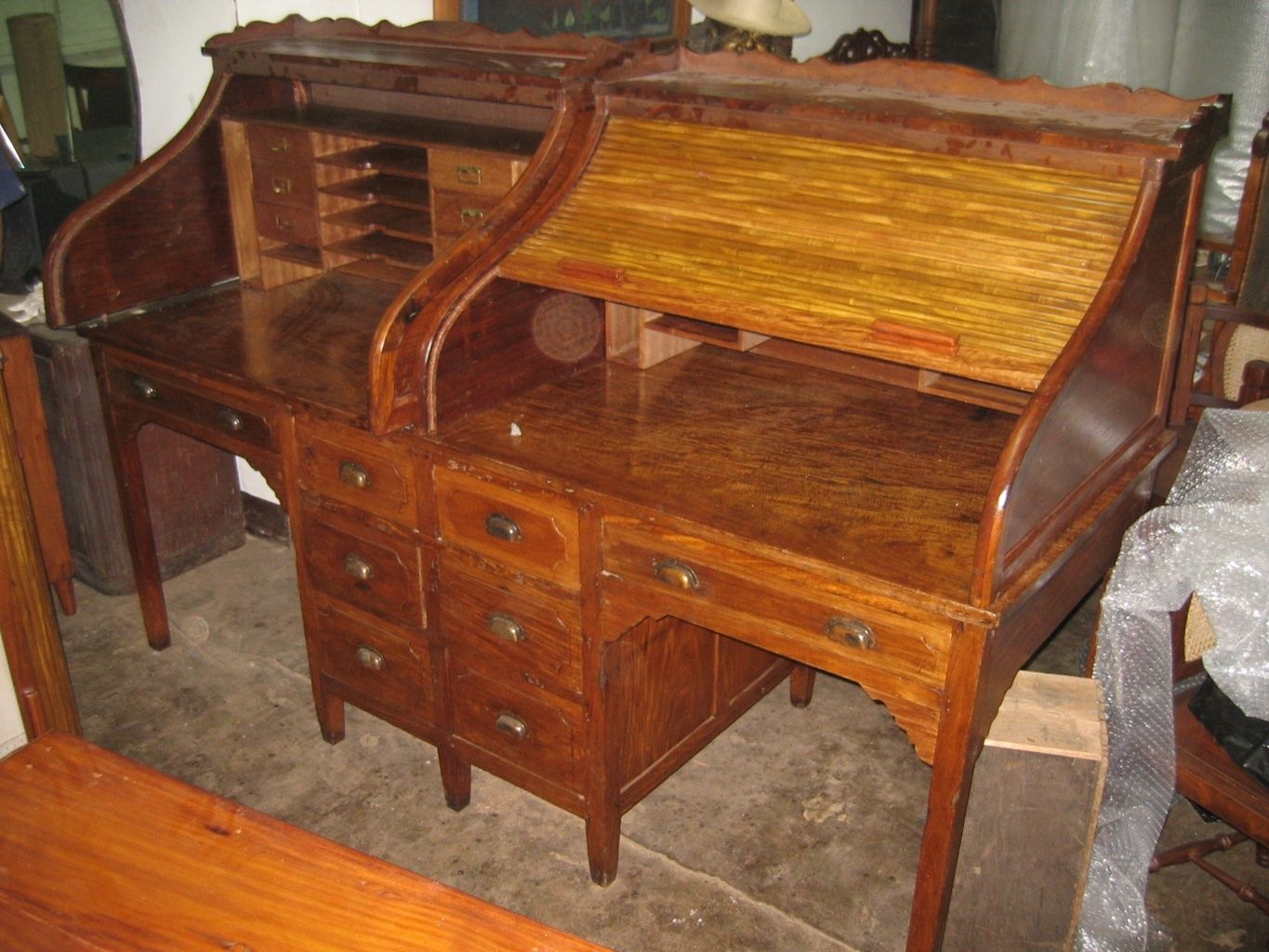

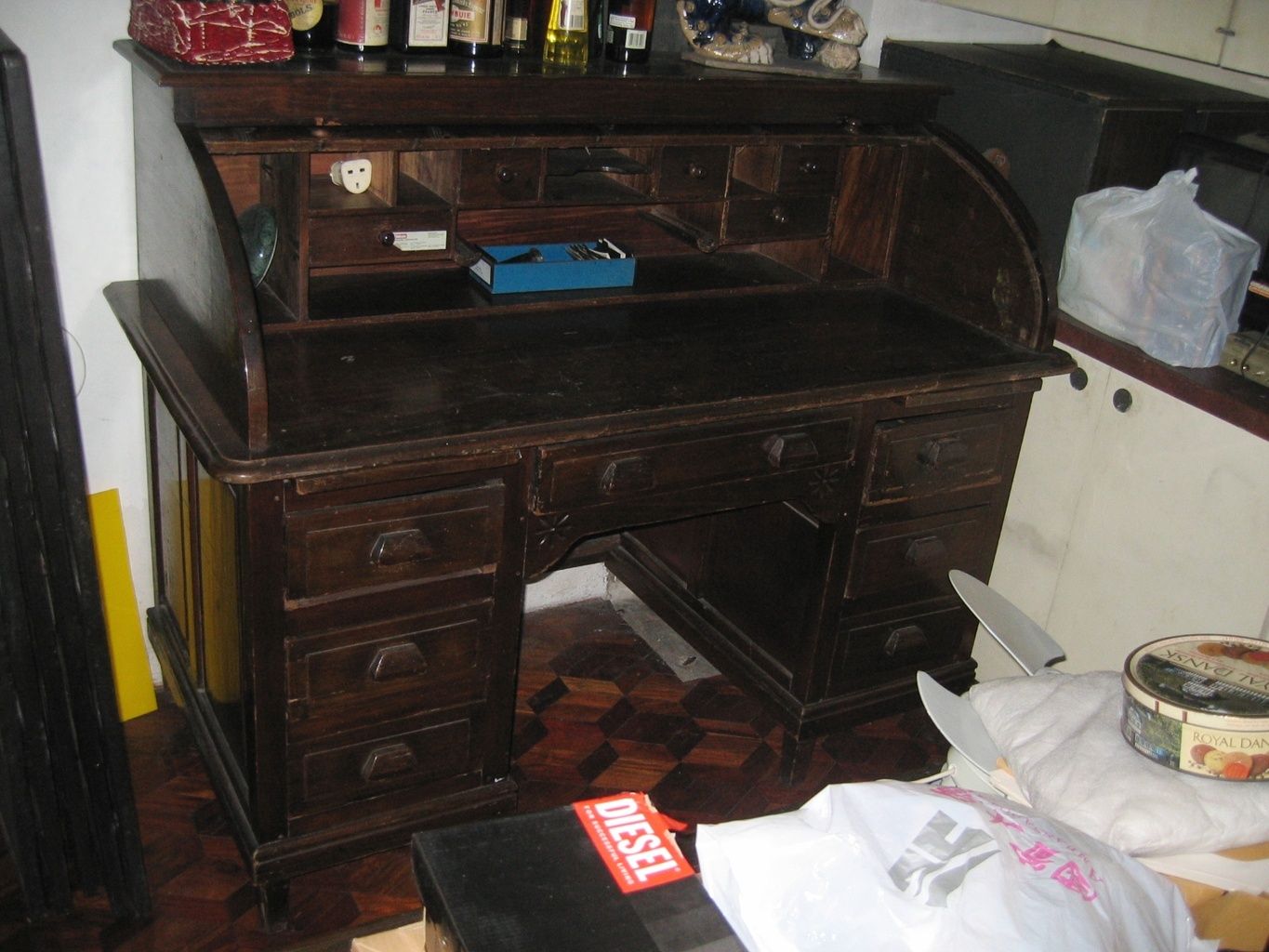
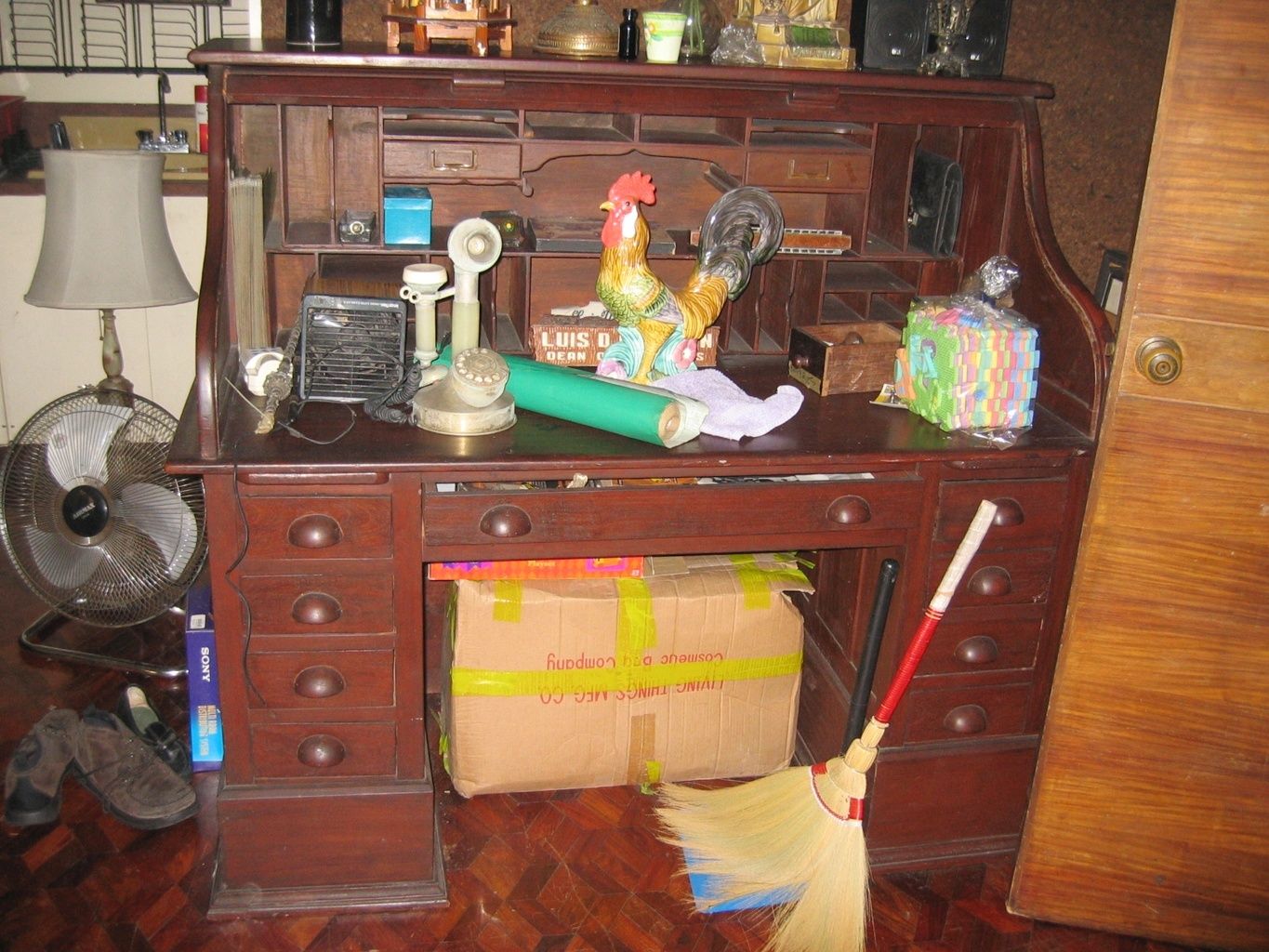
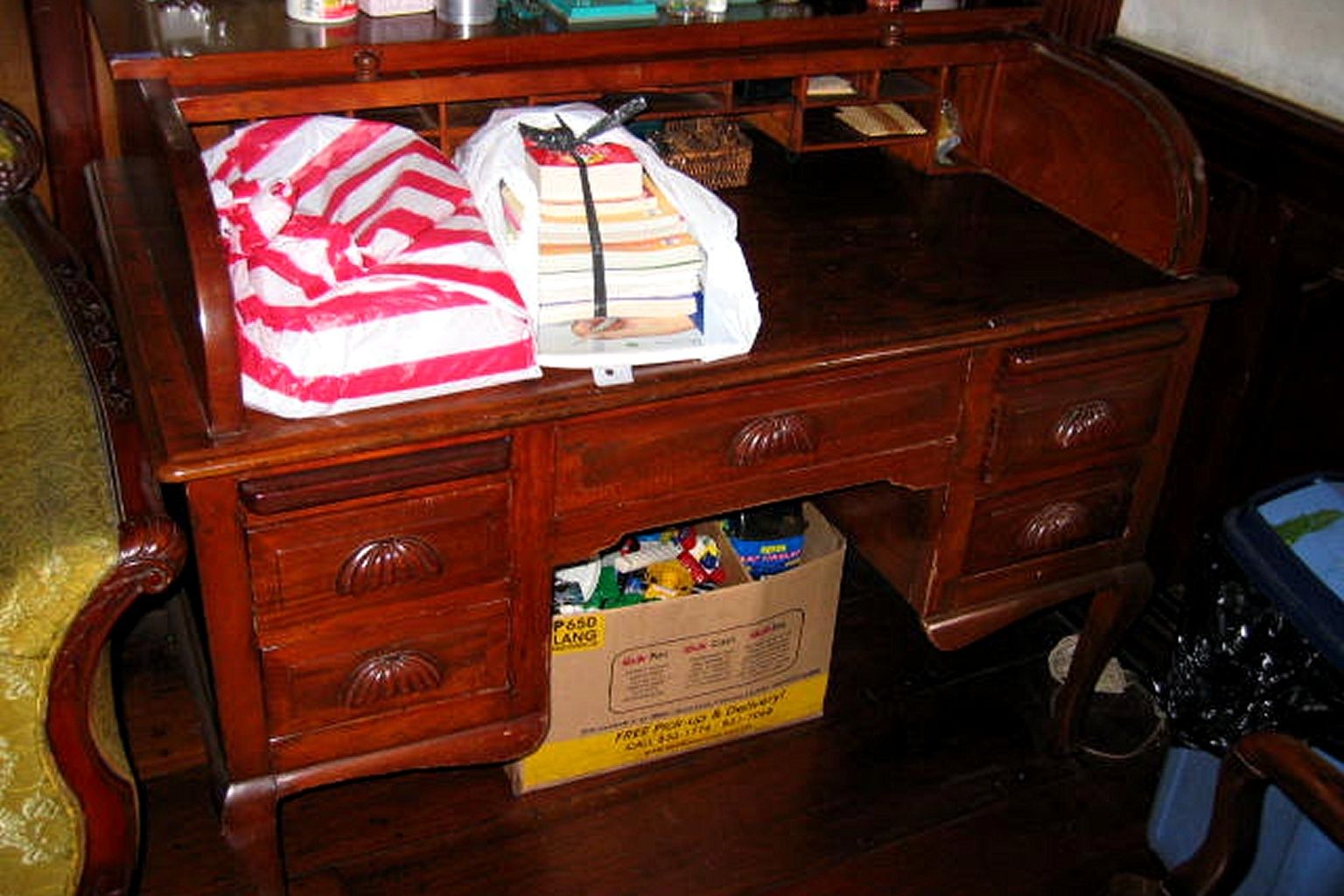
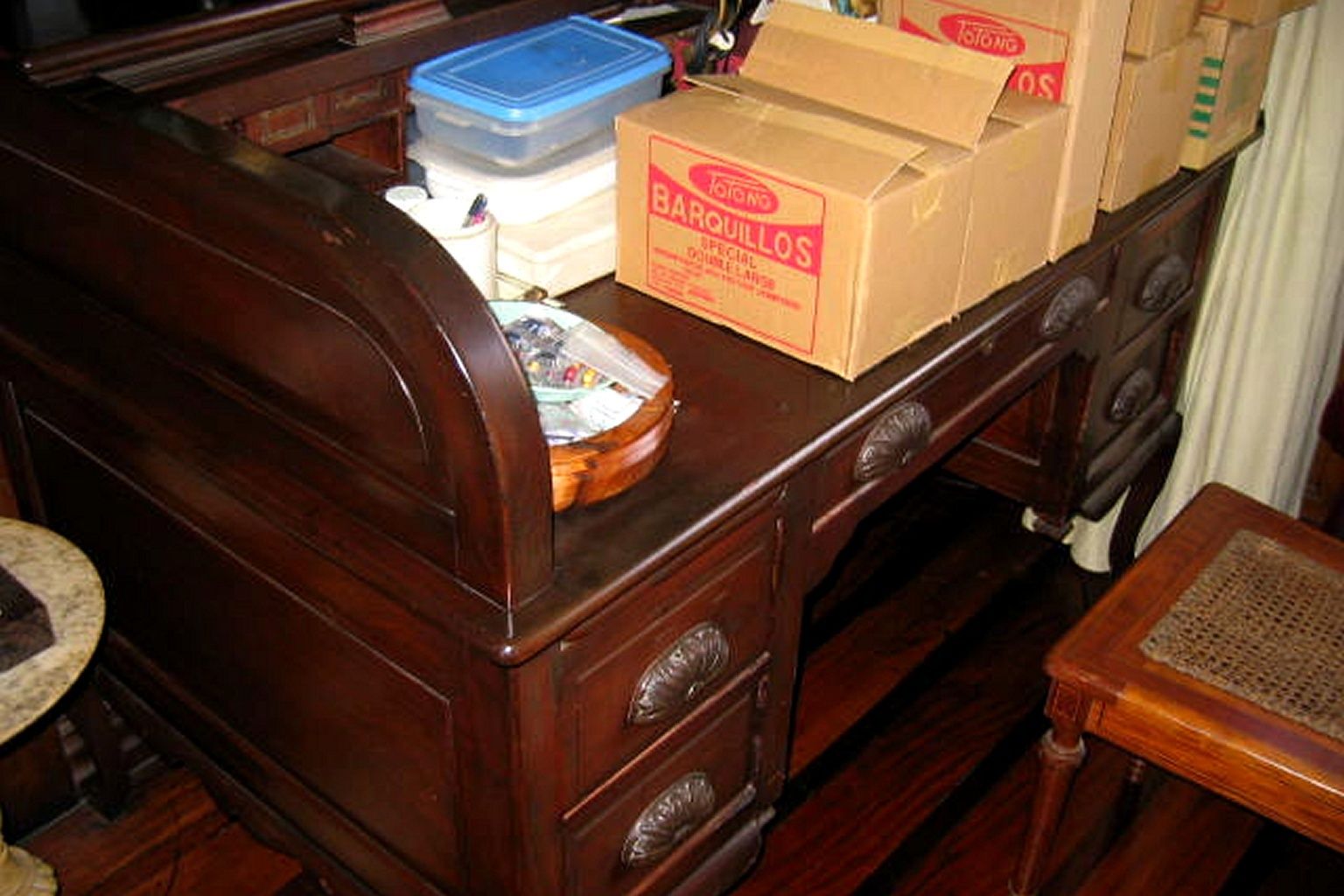
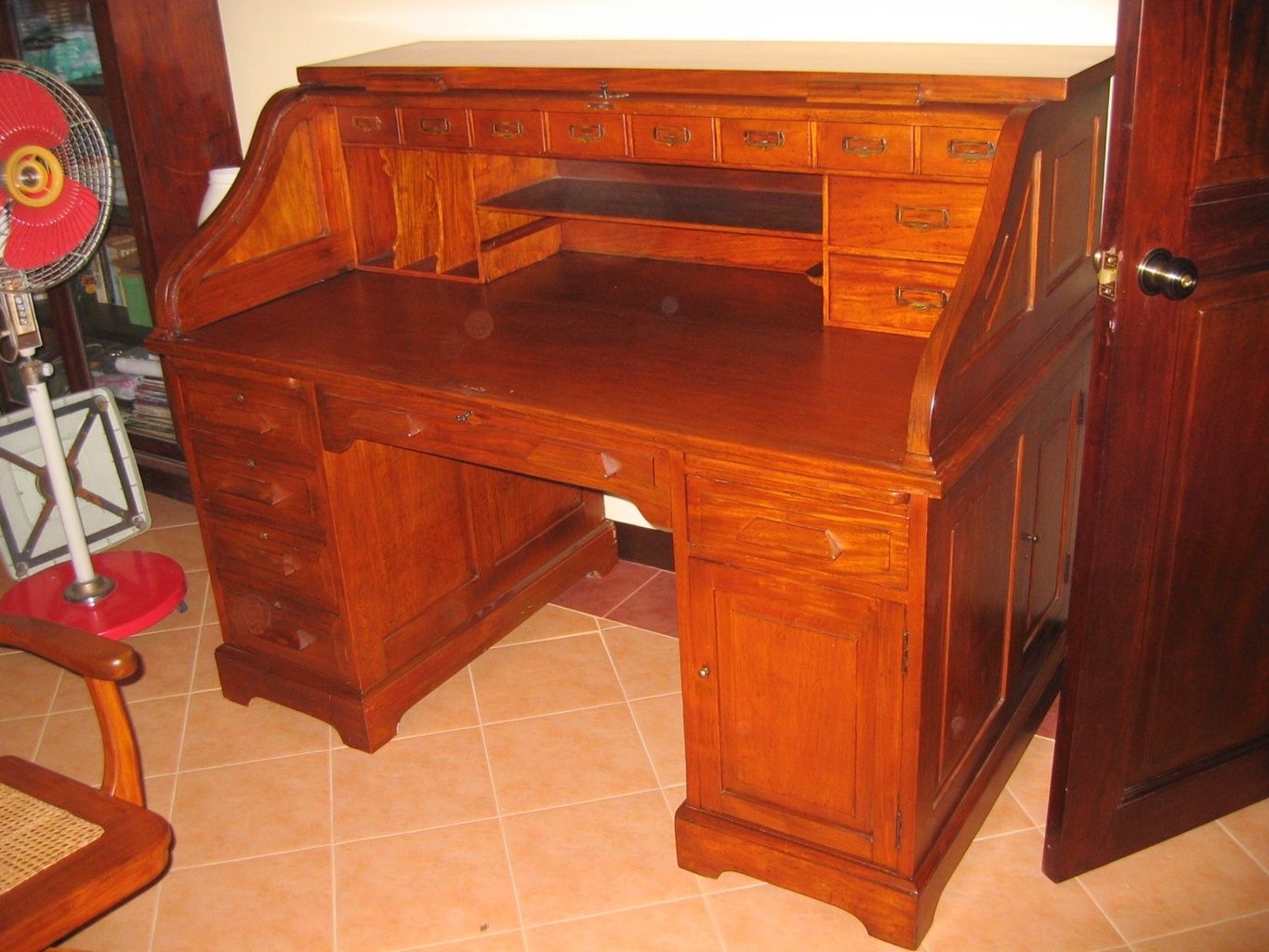




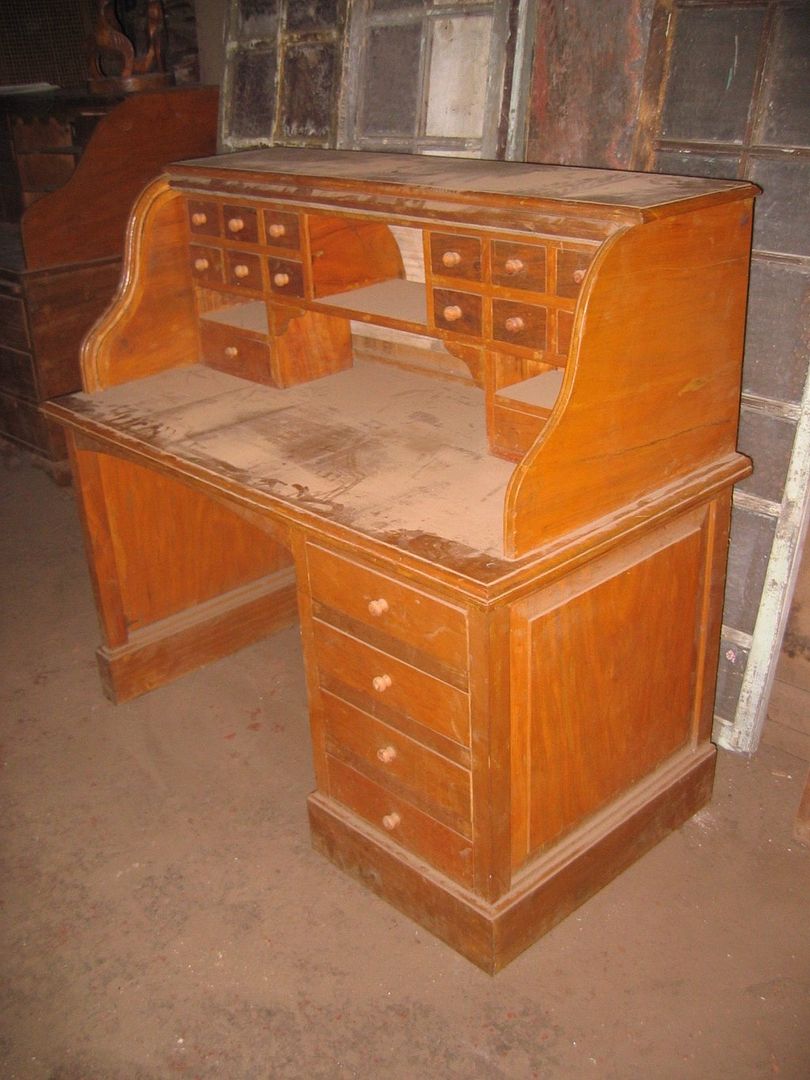

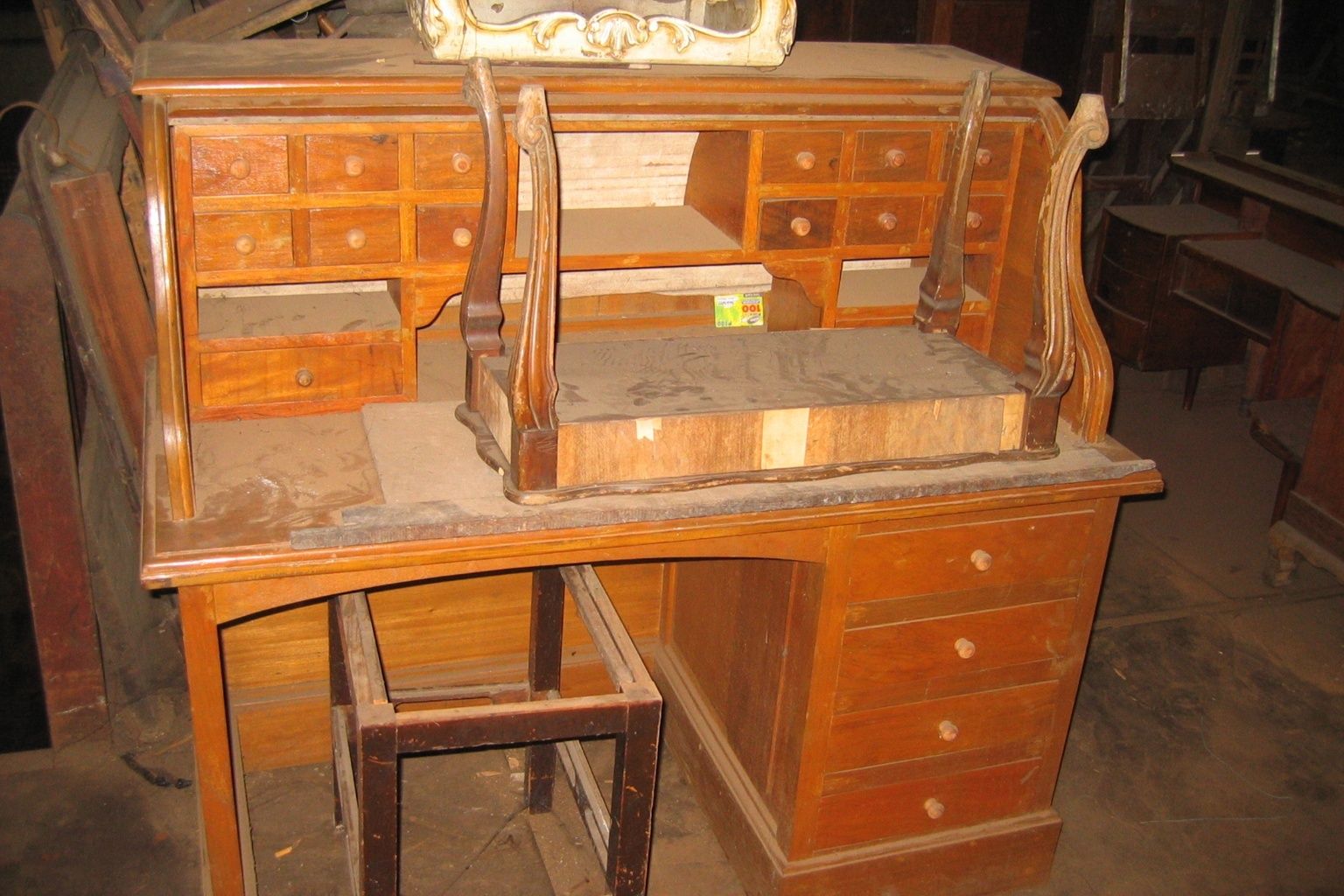
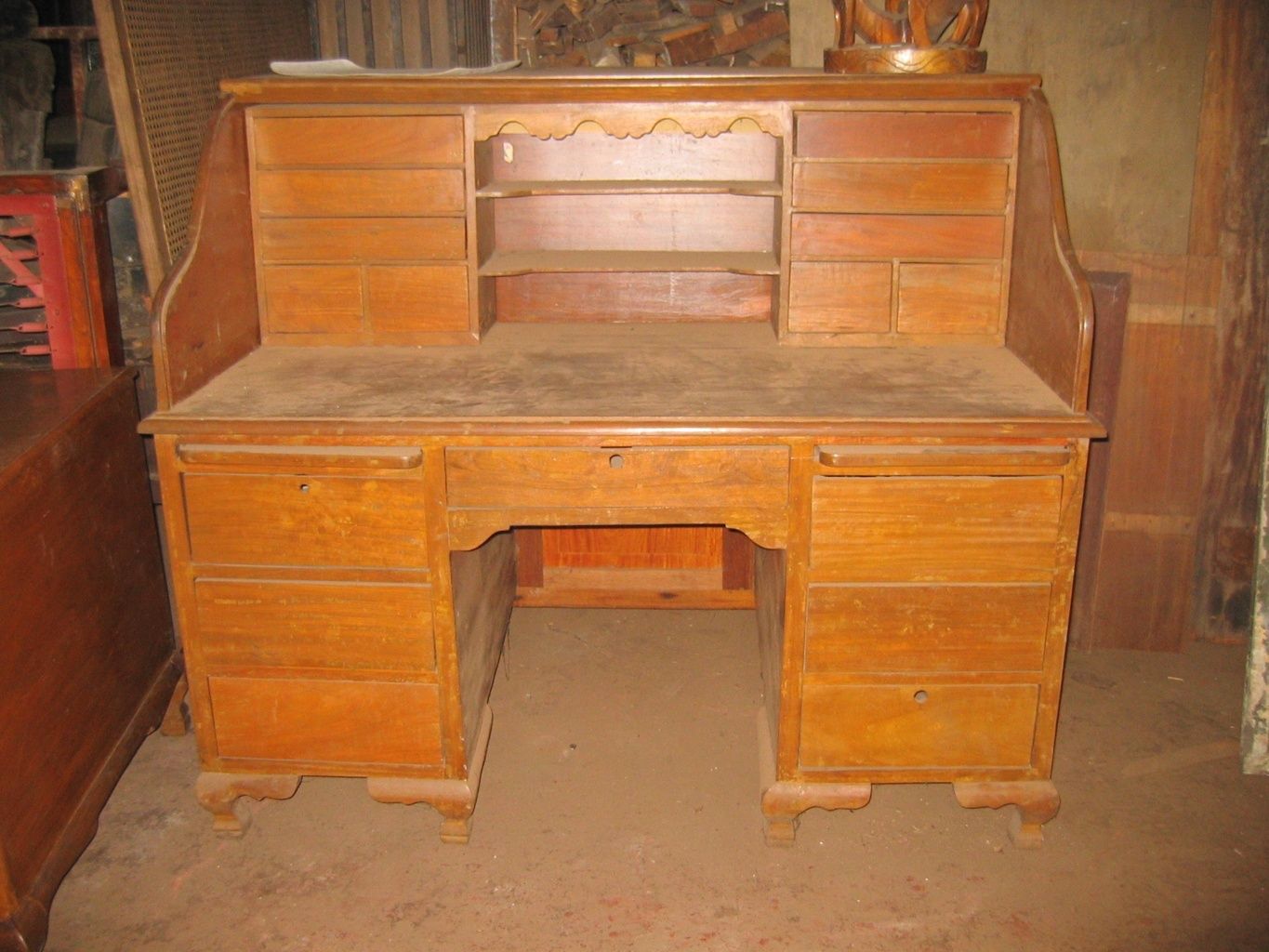
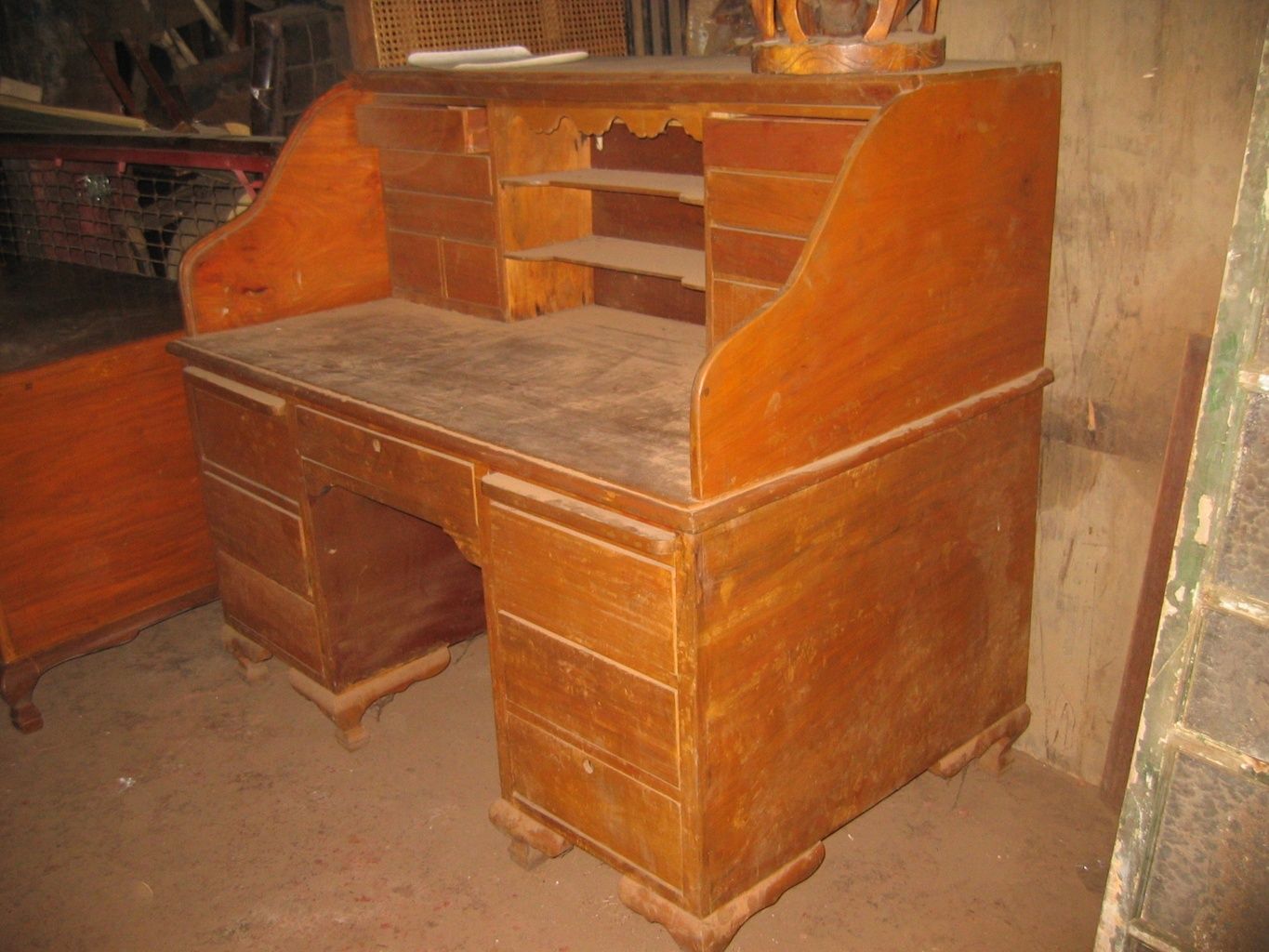
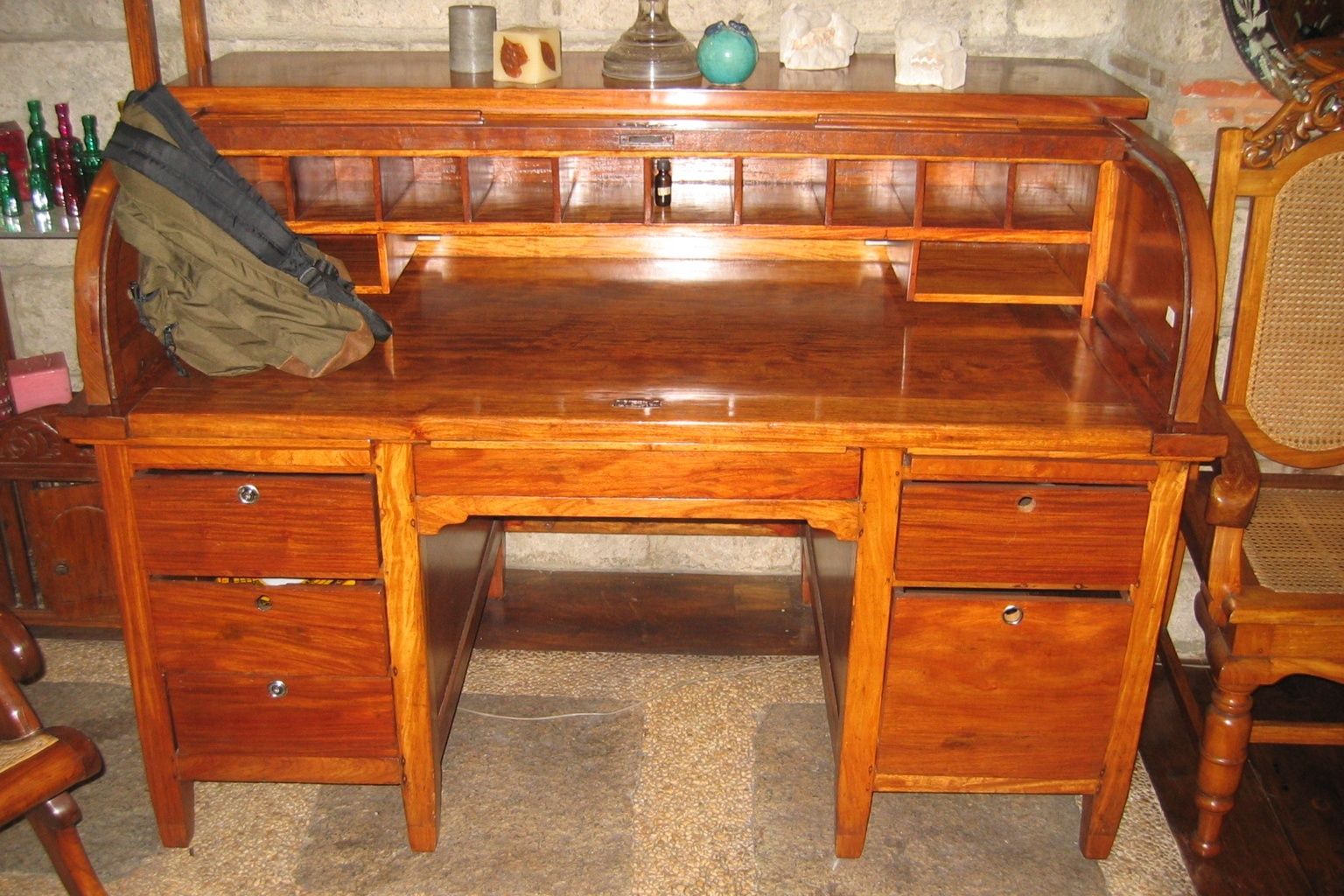
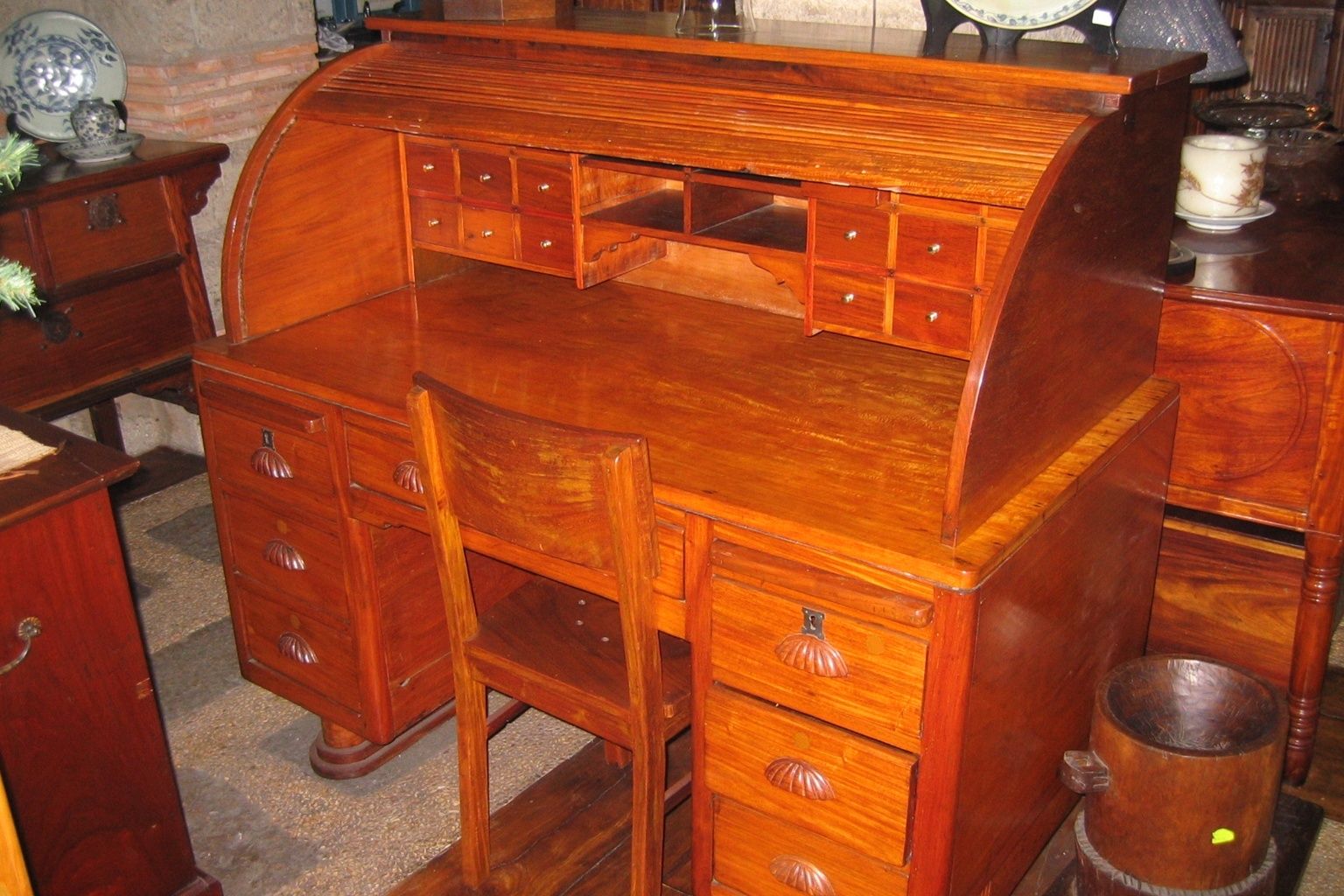
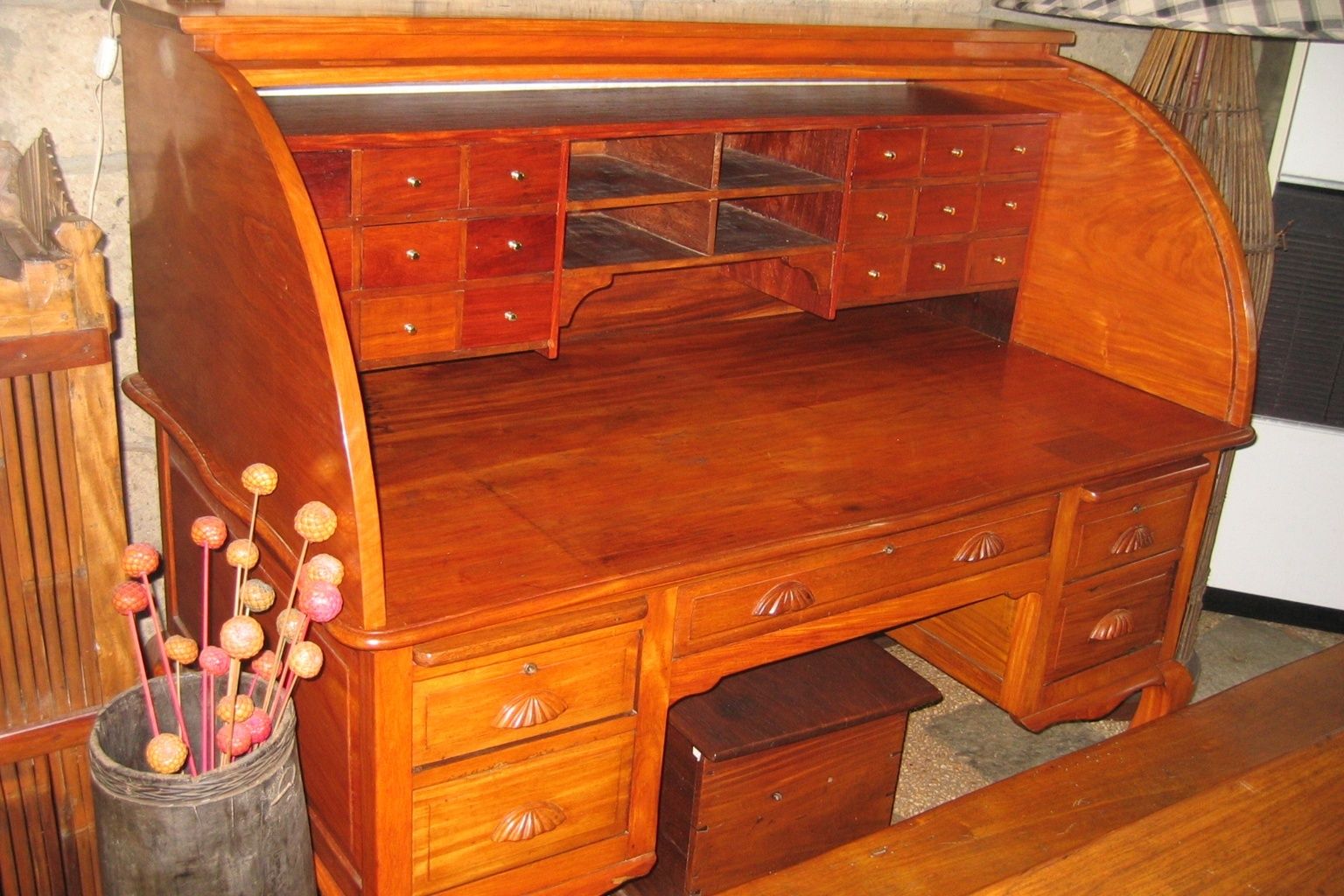
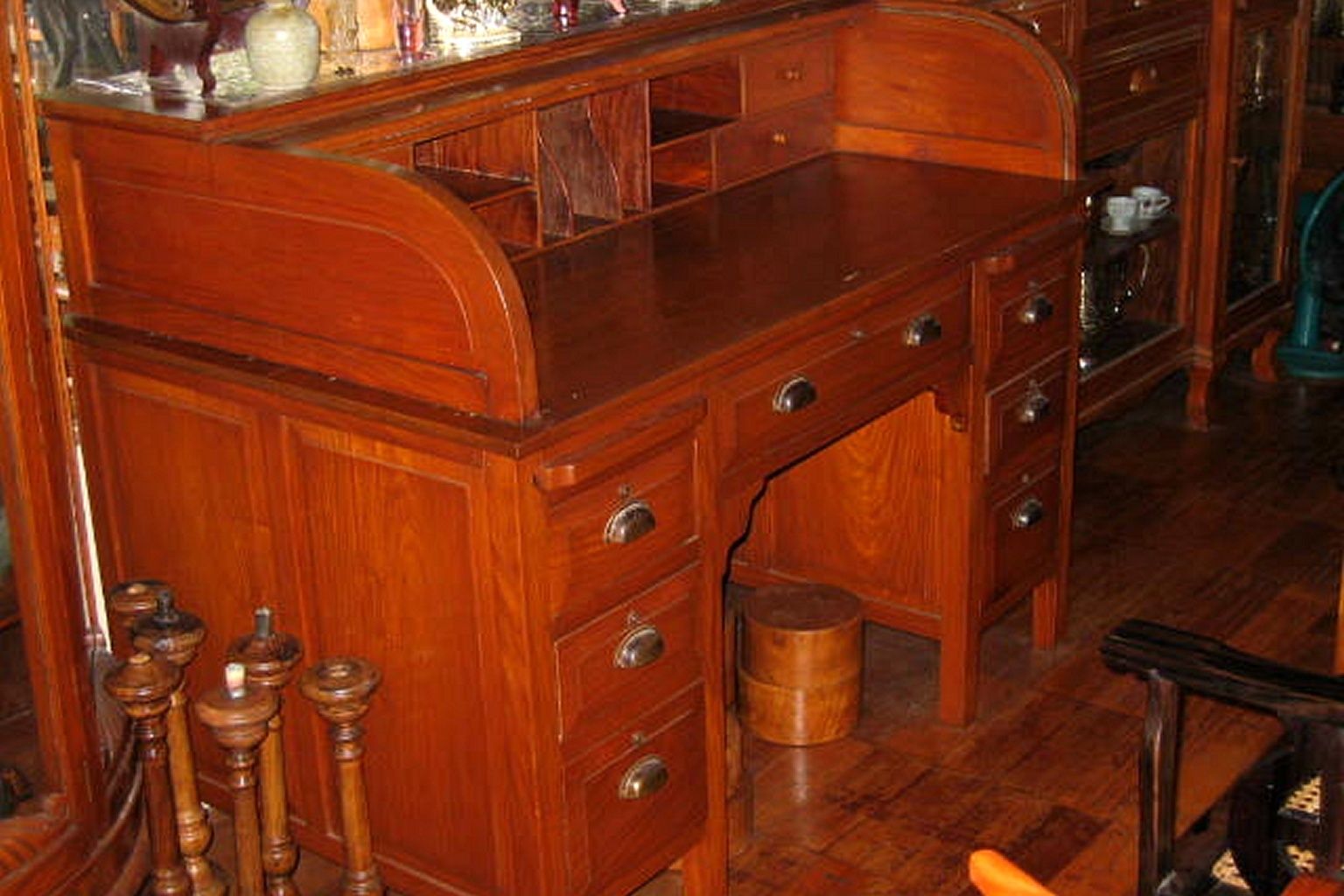




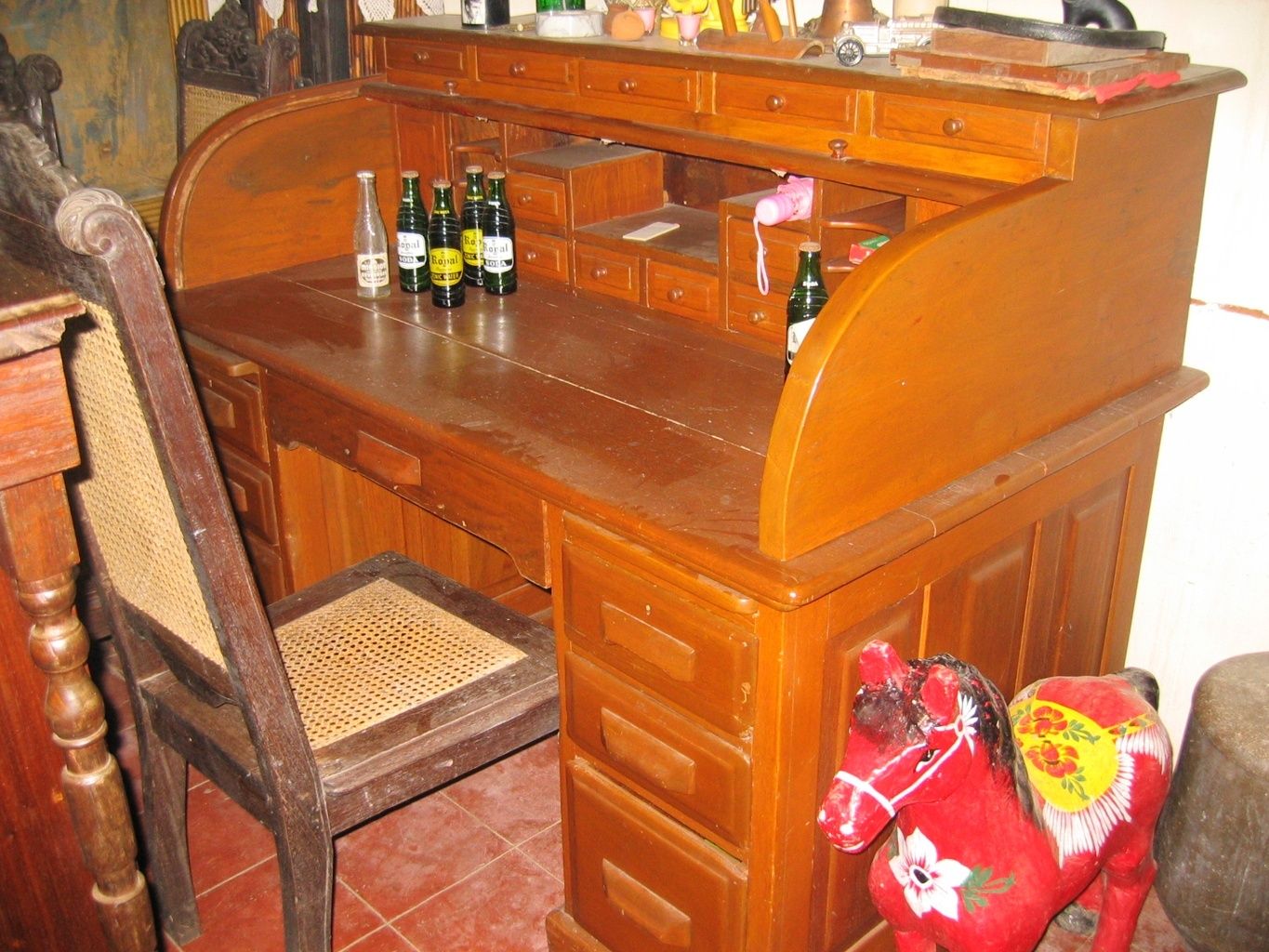
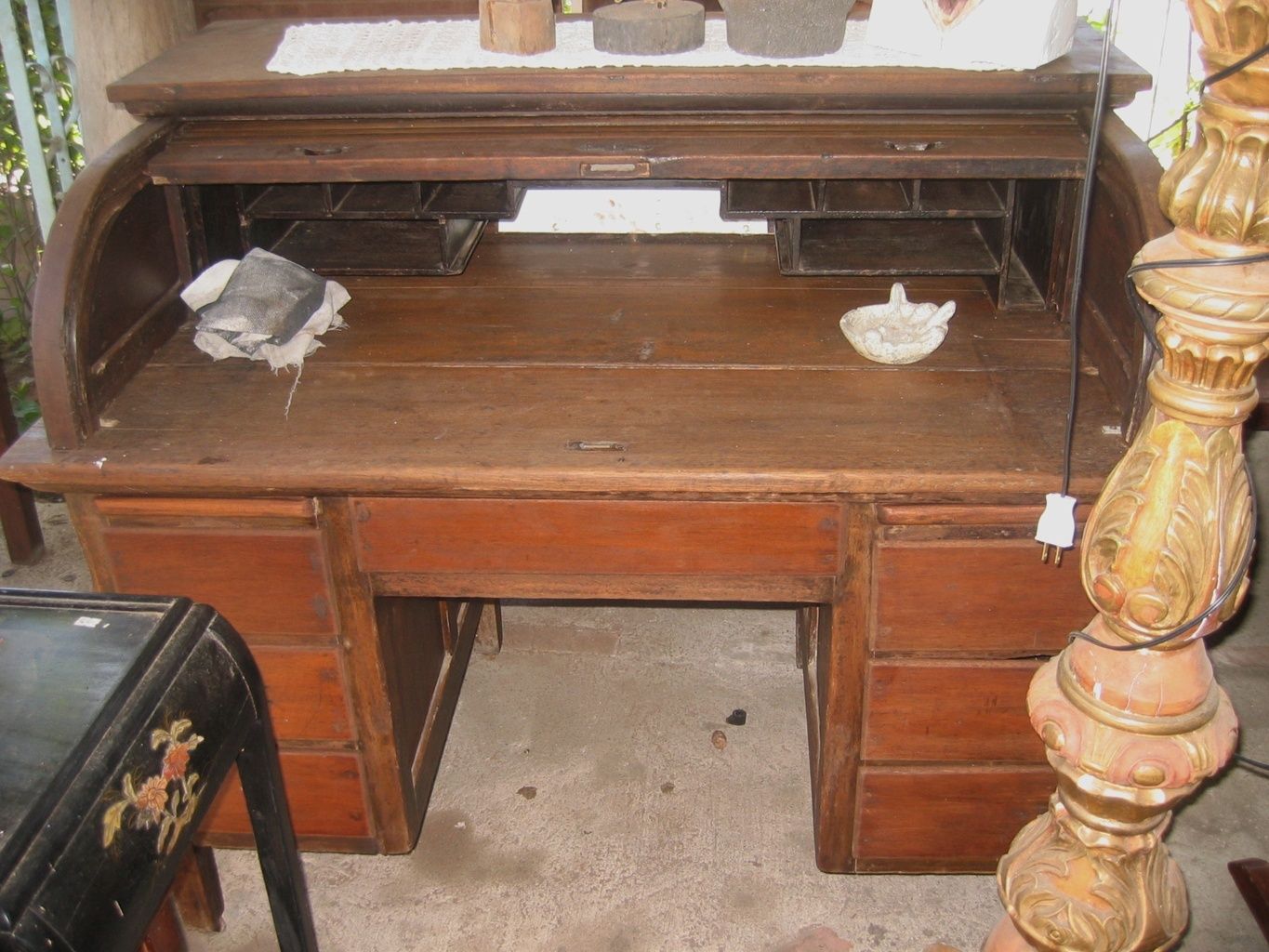



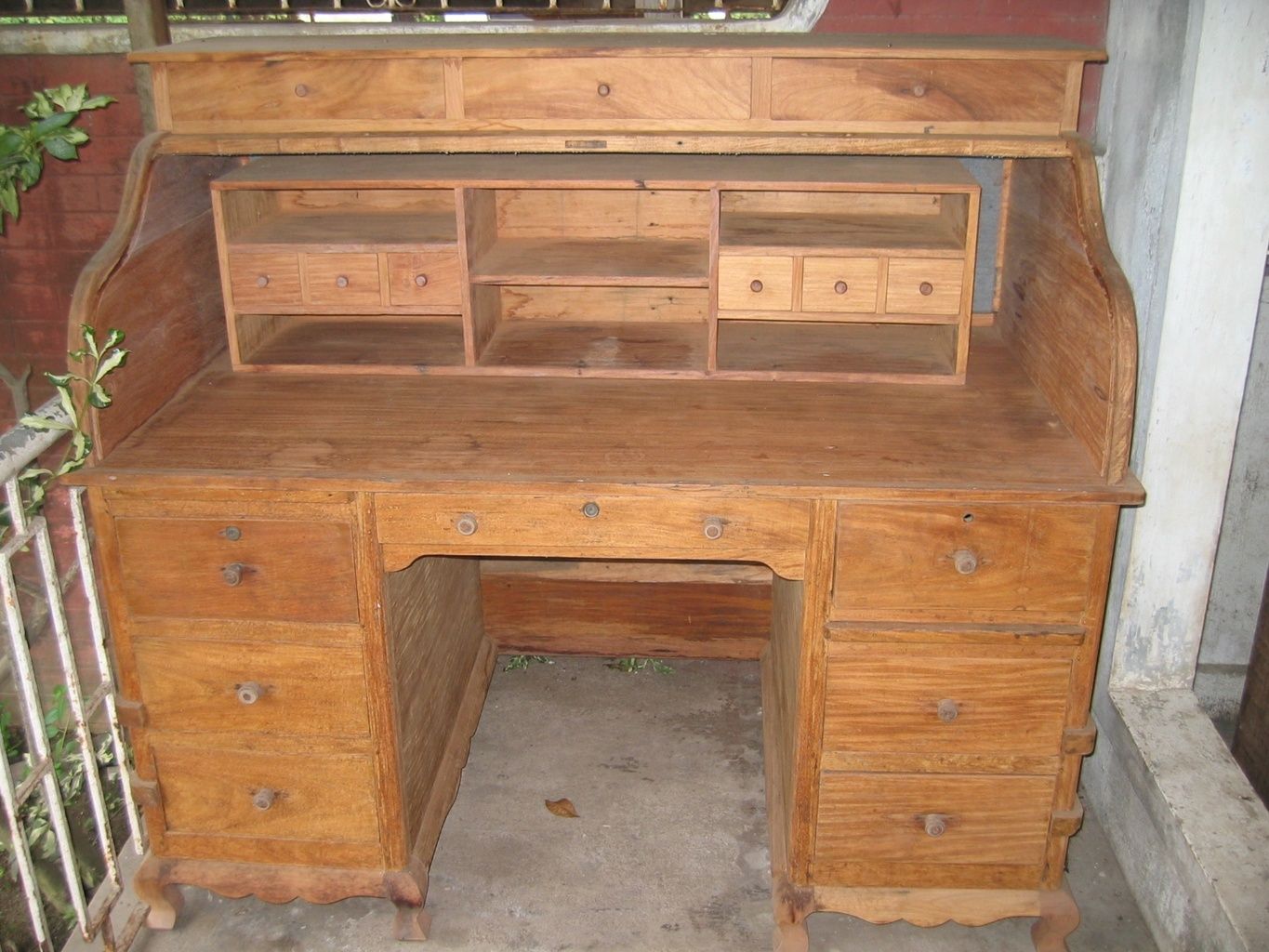





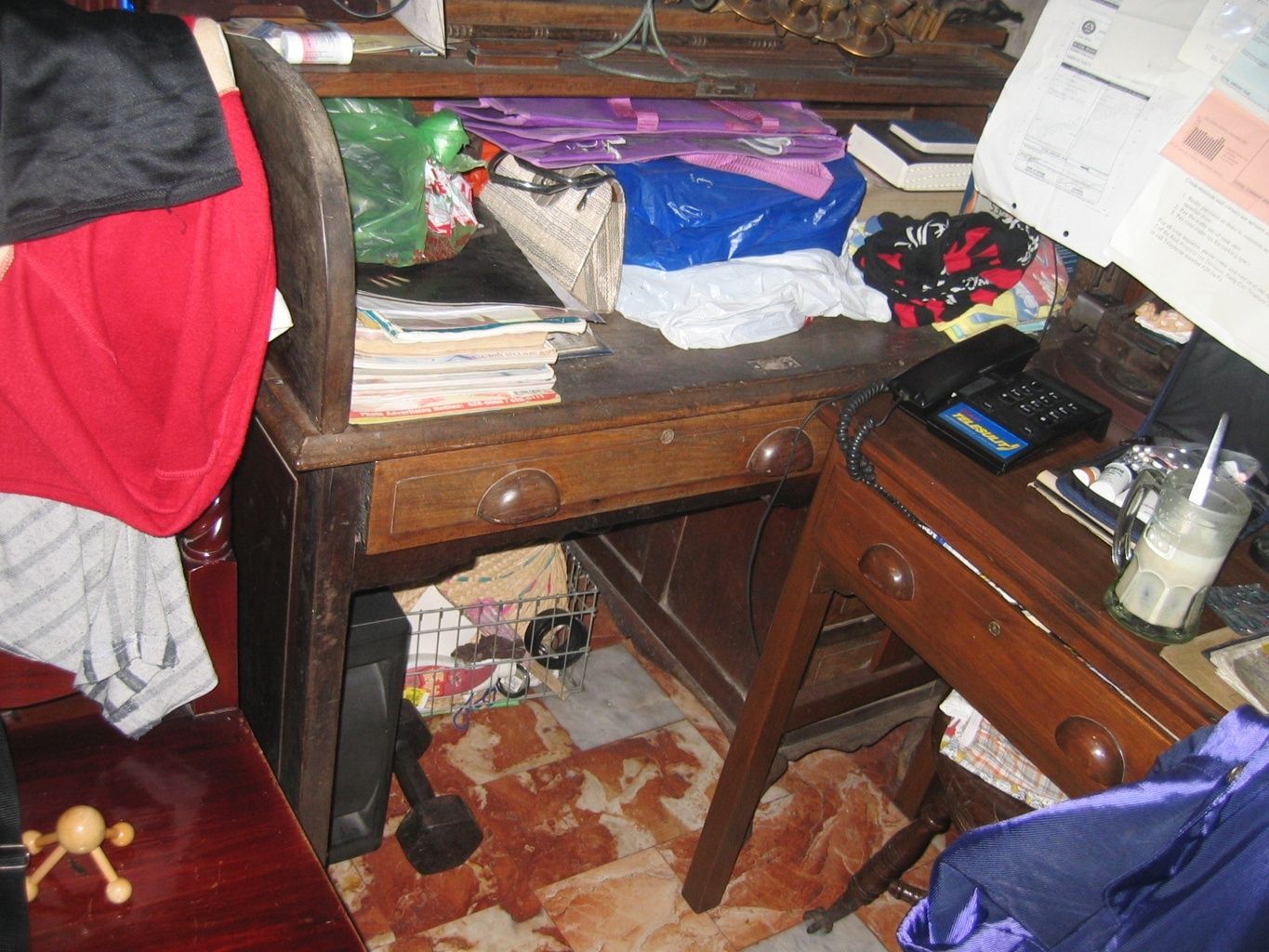

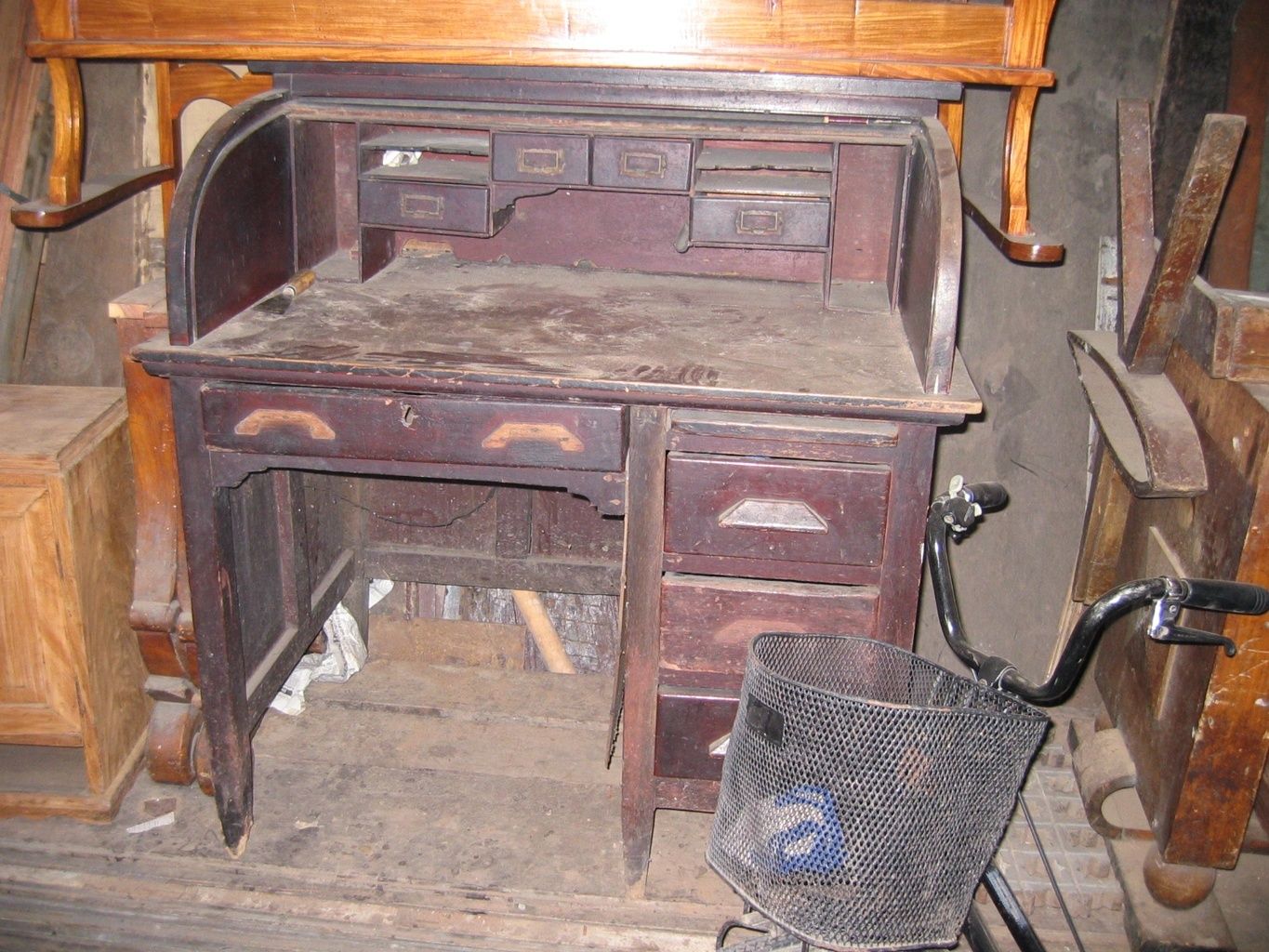

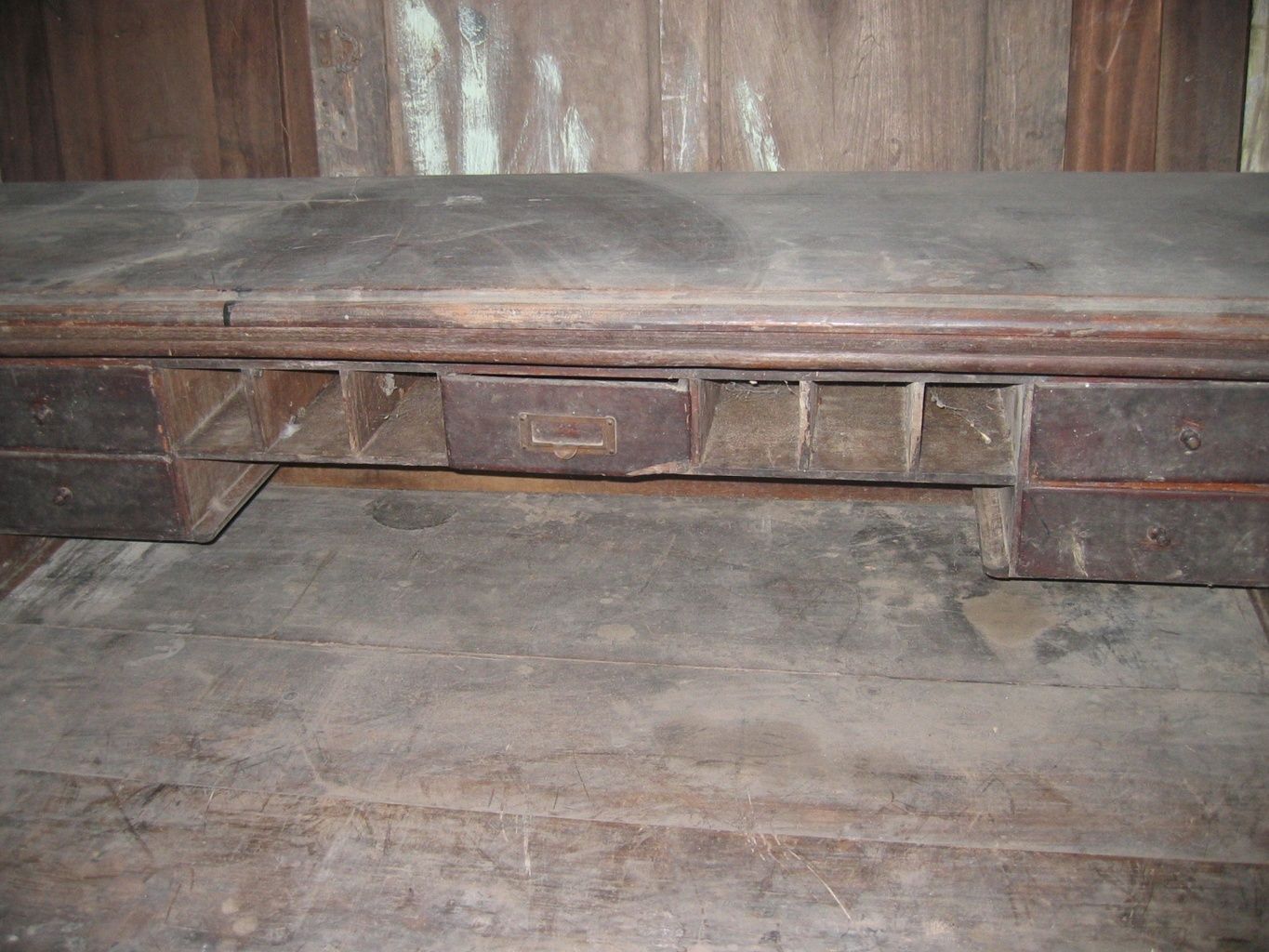




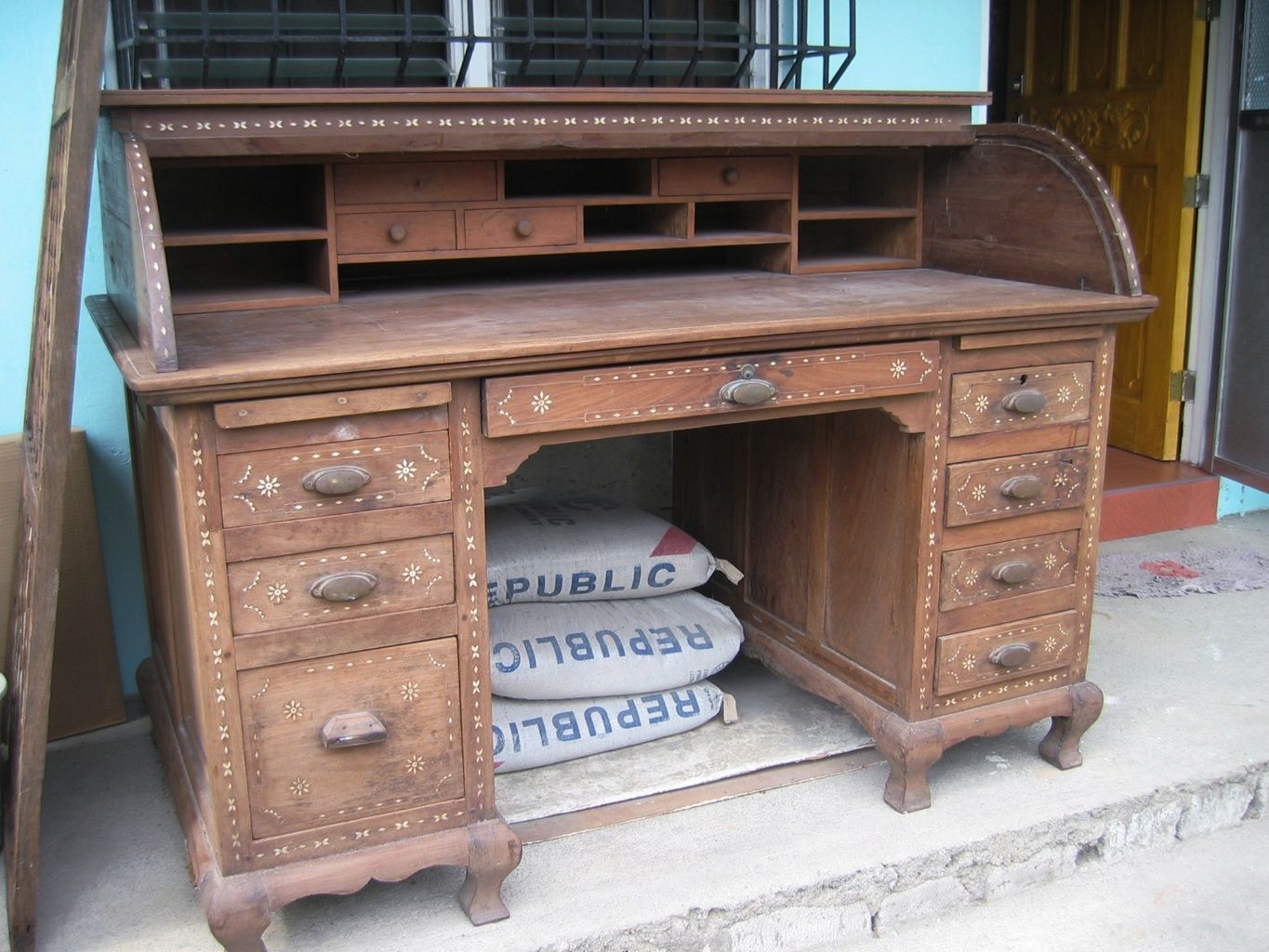

No comments:
Post a Comment